The Internal Comms Podcast

Episode 101 – From complex to clear: Elevate your presentations
As internal communicators, empowering leaders to clearly communicate business strategy, important updates and company values is a valued skill. How can we inspire colleagues and leaders alike to make the complex simple?
This week’s guest and founder of Present Your Science, Melissa Marshall, has built a career educating scientists, engineers and technical professionals about how to present their insight. “The work matters,” she says, but as is discussed in the episode, so often we hear people say they’re simply no good at public speaking.
Melissa says that there’s a toolbox that will help even the most anxious public speaker improve their presentation skills. And she has walked the talk – her own TED Talk, Talk Nerdy To Me, has been watched nearly three million times.
So, if you’ve ever felt the trepidation of an upcoming talk, or struggled with distilling the complex into the clear, this is a conversation for you.
As always, share your thoughts on this or any other episode of The Internal Comms Podcast using the hashtag #TheICPodcast. And thanks for listening.
Transcript
Katie 00:04
Hello and welcome to The Internal Comms Podcast with me, Katie Macaulay. This is a show devoted to improving the way organisations communicate with their primary audience: their people. How do we inform, inspire and energise our employees, and crucially, in the context of the conversation you’re about to hear, help colleagues share their knowledge and insight with each other?
Katie 00:32
My guest today is Melissa Marshall. Now I reached out to Melissa, having watched her brilliant TED Talk, entitled, Talk Nerdy to Me, which has been viewed nearly 3 million times. As you’ll hear Melissa say in this conversation, she is on a mission to improve the way scientists, engineers and technical professionals convey their work because the work matters.
Katie 01:02
Melissa is the founder of Present Your Science, a consulting firm that works with scientists and engineers, from the halls of academia to the Fortune 100, to help them transform their presentation skills, and present their work in ways that inspire people to take action. Before that, Melissa spent a decade in academia as a faculty member at Penn State University in the US.
Katie 01:32
Listeners if you have ever felt your heart sink, after enduring yet another presentation that you know without doubt, has failed to activate, convince, or even slightly connect with the audience, then this episode is for you. Melissa explains why having a lot of information is not the same as having a message. She explains how being a presenter is like being a Braille guide leading people up a mountain. It’s a brilliant analogy. She sets out a research-based approach to slide design to avoid cognitive overload. She tells us about the hidden AI rehearsal functionality that’s built into PowerPoint these days. She explains the very first question you should ask yourself or a leader before starting to write a presentation, and much, much more. This conversation is gold dust if you’re preparing to present, or you’re helping others to present. Melissa mentioned some very useful resources throughout this conversation, all the links you need are in our show notes as ever, listeners, as well as a downloadable transcript too. So without further ado, it is my great pleasure to bring you Melissa Marshall. Melissa, welcome to The Internal Comms Podcast.
Melissa 03:06
Thank you for having me, Katie, I’m delighted to be here.
Katie 03:09
I wondered where to start. And I thought a good place might be the inspiration that led you to establishing your business Present Your Science.
Katie 03:18
Sure, I spent the first 10 years of my career as a professor at Penn State University. While I was there, I designed and taught presentation skills courses. Early on, I had the absolute good fortune, but it was a bit a bit random as well. The College of Engineering needed someone to teach a specialised version of a presentation skills course, because they were trying to improve the communication skills of their engineering students. Their feedback they were getting is that the students were excellent when it came to the technical parts. But employers were also saying, hey, we’d love to see young engineering professionals be a bit more successful at talking about their projects. And so with that impetus in mind, the College of Engineering came over to communications and said, hey, we’d love to create a targeted course, that would help our engineering students to communicate about their work a bit more effectively. And because I was, I would say, somewhat known in the department as being someone who was relentlessly practical meaning, meaning that I want to teach folks something that they can use immediately. So my name was very luckily the one that kind of bubbled up to say, hey, we think this professor might be the one to work on this project. And so I worked to put together this course and I kid you not Katie, it was the first class I was actually quite nervous because it was a whole different group of students and different material. When I stepped in front of that class and started to get to know those students and was hearing about all the cool projects that they were working on, and realising that this is a group, engineers technical profession. annals researchers, this is a group with unbelievably important ideas. And the only thing sometimes standing in the way is the ability to convey those ideas to someone else. For me as a communications professor, I was like, this is it. I’ve never looked back from that first class, I said, this is what I’m going to do, I am going to work with scientists, engineers, and researchers. And I’m going to try to be that person in the middle with my communications background to say, hey, here are the practical things that you can do to make sure the awesome ideas that you’re already working on that those are able to get out there and be understood and appreciated by others. So my students were my first inspiration. And I will tell you, I haven’t looked back since
Katie 05:47
What kinds of clients are you working with today?
Melissa 05:51
So research oriented fields, medical research, pharmaceutical research, that’s one big area, because as you can, I’m sure, imagine there are a lot of breakthroughs that happen as we just look at our world, look at all of the amazing things. So when you think about the medicines, and the treatments, and the vaccines, and all of the wonderful work that community has brought to us. But if you look back at the earliest stages of much of that research, there is someone in a lab or a team in a lab that has an important breakthrough, that has to be communicated to folks that are in regulatory positions, in leadership positions in the company, I also do quite a lot of work with government institutions, we have a lot of government funded research that’s tremendously important to our society. So those folks that are using public funds, and making sure that the public is able to understand the importance of the work as well as our policymakers. That’s also a place where a translation of science is really important. And then lastly, even though I have now worked with my company, Present Your Science, I still do a lot of work in academia, I get invited to speak at universities, I love the opportunity to work with students, I particularly love working with graduate students, because they’re so early in their career. They’re the ones that I’m going to be working with in their company in a few years. But it’s really nice to have that chance to get them early, because then they don’t have to spend the next 10 years of their career until I get invited to their company, they get to use the skills right away. And so I love meeting early career professionals because these are skills that they can use immediately that really actually amplify their success in the first few years of their career.
Katie 07:31
I can imagine having worked with lots of engineers and technical communities over the years, I can imagine various obstacles or barriers you have to overcome in that endeavour of translating it for everyone to understand. One of the push backs, I’m sure you’ve heard many, many times is this fear that if we remove the technical terms and the acronyms, we’re going to dumb it down. I’m sure you must have heard that many times. What’s your reaction to that fear?
Melissa 08:03
Yeah, I have to say that is one of my least favourite phrases. I know that it’s just a phrase people use. I know, it doesn’t come actually from a bad place. But I hear that many places that I go. And it’s something I push back on pretty hard, because even though I know we’re just using it offhand, I think that words matter. And if you actually look at that set of words, the implication there is that someone is dumb that doesn’t have the same background. And again, I know that’s never how people intend it but that is an it’s an insidious thing that can get in our head. And I think we’ve got to really push back on that. What I really love to equip folks I work with, with the idea that it’s not about dumbing it down. Right? That’s not the right phrase, what we want to think about is making it accessible. Yes, because just because someone doesn’t have your same background or your same knowledge certainly does not make them dumb. And I don’t think that researchers actually think that, but I think we have to continue to challenge ourselves. The goal is that we are successful as communicators, by making our audiences successful. If our audience doesn’t understand something that’s not on them, that’s on us as the communicator. We have to do everything that we possibly can to make our ideas audience focused, that we are adapting to the needs of our audience, whatever their understandings are, but it is about making the science or making the ideas accessible, but I think that it’s a false choice. Actually, this trade off between understanding and accuracy, we can have both.
Katie 09:45
And also, isn’t it true that the smartest people make the most complex things sound simple, because they’ve thought long and hard about how to boil this down to its most crucial, simplest idea?
Melissa 10:00
Yes, absolutely. We have some pretty good precedents for this in that Einstein said that if you can’t explain it simply, you do not understand it well enough. And I think that’s is a sobering statement to think about, because occasionally, I certainly will run into a researcher who says, it’s not possible for someone without a background in physics to understand this. And I will say, nope, that is not the case. All that means it might be challenging, that means you’ve got to sit with it a little bit longer, because the more deeply you understand it, the more simply you’ll be able to explain it. And so when you run into that challenge of I’m not sure how to explain this, that’s okay. That doesn’t mean that there’s something wrong, there’s not something wrong with you, there’s not something wrong with the work, there’s not something wrong with your audience. But you do have to sit and think more deeply about it. We want to explain everything as simply as possible, but no simpler.
Katie 11:06
I love that so much. Just a quick supplementary question that’s nagging away at me. Having met lots of particularly engineers over the years, they’re not always the most gregarious types. And I’m wondering how much that also is a bit of a barrier, that they’re not particularly the first to want to stand up at a podium and address the crowd.
Melissa 11:31
That can be the case and broad themes, maybe looking at that group, but it’s certainly something that we often might associate is the sort of the more introverted researcher, if you will. But I have to tell you that, for me, that is one of the most common misconceptions. That we’re either naturally imbued with the ability to communicate or we’re not. Yes, certainly, Katie, there are some folks that are naturally more comfortable ending in front of others. But I work so often with people that might be less inclined naturally to stand in front of others, less inclined, naturally, to feel comfort in that situation. The one thing I have learned is that this is a set of skills that can be practised, that can be learned. As a teacher at heart, that’s why this is so rewarding the field that I work in, because I believe there are tools that anyone, regardless of natural comfort with the situation, can use to be successful when conveying their ideas. So I think that people think that that’s a much bigger barrier than it actually is, that makes me concerned actually, because everywhere in every corner of the world, we have such brilliant people working on important things. And I never want that brilliant person working on something important that solves a critical problem of our world, I never want that person to not get out there and talk about it to a stakeholder because they think they can’t, they think that’s not a skill set they’re good at, they think that’s something that they’re not comfortable with. And so they avoid it. Because from where I sit, there is a box of tools that we can hand to somebody and say, here’s how you can do this with a level of success. That is significant. Now, I’m not saying that they’ll always be the most comfortable doing it. But I don’t think that’s our goal. Our goal is to be effective. And every single person, I believe, can learn to be effective at communicating their work, regardless of their natural comfort.
Katie 13:49
Just to double down on that, I have a sneaky suspicion that those that are slightly hesitant, tend to be better in the end, because they’ve often thought about it, they’ve often rehearsed, prepared, whereas those that can be overly confident, can end up shooting from the hip saying something without it being properly thought through and actually shooting themselves in the foot to mix many metaphors. Sorry about that. But so a little bit of hesitancy and carefulness is no bad thing is it?
Melissa 14:26
The number one commonality that all effective presenters have is their willingness and ability to work hard and prepare. That is the defining factor. It has so much less to do with that natural charisma, if you will, even though we all love that we can see it when we see someone on a stage or someone who has that wonderful essence or quality. We can all see that and say, oh, I want to be that, but I have to tell you if there’s one thing that I have learned in working with 1000s of presenters, is that the ones that seem the most, let’s just say, off the cuff and natural and conversational, and successful, those are the ones that have worked the hardest at it. It is absolutely the commonality that every single successful presenter has is that they practice, they prepare, and they work at it, they get experience doing it, that is a thing that I absolutely know to the core of my being to be true. And so to translate that, why I think that is such good news, actually, for a reticent presenter is that anybody that has chosen a career in science, engineering, research, a technical profession, those are folks that know how to work hard, they already have the skill set that you need to be successful as a presenter. And so I would 10 times out of 10 rather work with a more shy, less comfortable, hard worker than the most gregarious charismatic person who doesn’t want to put in the time.
Katie 16:14
I totally agree. There’s a few things I want to get into in terms of the tactics, your toolbox, and also how you pair. But before we start there, you just use an absolutely brilliant analogy to describe how we should craft a presentation when we first met in preparation for this conversation. You said we needed to be a trail guide, would you mind bringing that analogy to life for us?
Melissa 16:40
Sure. One of the major challenges that I am often addressing with the groups that I work with, one of the biggest challenges when presenting science is how do you filter and focus your details? Every single project has so many details. And a presentation is by nature, a constrained situation, you never get infinite amount of time to present, you get a slot on an agenda at a meeting or at a conference. And typically that slot is 15 minutes, 20 minutes, 30 minutes, but doesn’t matter how long it is, it’s never enough. So you have a limited period of time to talk about work that perhaps has taken months or years. There are so many details. And so a picture that I like to have in my mind that I think is helpful to help us to figure out the most critical details is I think of a speaker, like a trail guide. And you as a speaker, you’re a trail guide that is responsible for helping your audience get to the top of the mountain of your work, right, and I choose the mountain on purpose. This is not a leisurely walk through a meadow. There is some challenge involved when communicating a complex project. But there’s nothing wrong with that. Because why would any of us go through the challenge of hiking a mountain, we want to hike a mountain because there’s a cool view. And I think it’s exactly the same thing, a good presenter walks the audience up the mountain to get to the view of the work that they want them to have. That is a really nice picture to have in our minds. What does that tell us as communicators? First of all, a good trail guide knows that you cannot look at every rock and tree on the mountain, right? If you look at every rock and tree on the mountain, your group will be exhausted, and they won’t have made forward progress. So we have to choose the right things along the path to focus on. And then importantly, a good trail guide knows that if you started with 10 people, at the end, you want to have 10 people standing there with you looking at the nice view. So our goal is to get everybody to the top, it hasn’t been successful if two people are standing there, and the other eight people are lost along the trail, right? And so we want to be standing there with everyone looking at that view. And so with that in mind, when we are trying to think about our work, when you’re trying to prepare and figure out the most critical details, I think the best thing that every presenter can start with is what is that top of the mountain view? We should all be able to articulate at the end of this meeting at the end of this presentation, this is the single most critical thing I want my audience to know. And if we know that’s where we want to end up, we should use that as the guideline of everything else that we choose to talk about.
Melissa 19:27
So I like to recommend that folks work backwards from their top of the mountain. So once you understand your top of the mountain view, ask yourself, what would my audience need to know in order to get there? And that can really help you to start to look at your information to look at your details, and anytime you have something where you say to yourself, I think I might want to throw this in there all the time. When I’m coaching people, I say okay, let’s look back at our top of the mountain. When I’m coaching we write that down and we keep it front and centre it is on the computer screen when we are working, and I say, Okay, you want to include this piece of information, how does that get us closer to the top of the mountain? Because we want to avoid running all over the place stuff that looks interesting as a side trail, that is often not useful when we’re talking about a presentation, we want to be relentlessly focused on getting to the view.
Katie 20:20
How much is that view about the so what question? Because I’m wondering whether a lot of the problem is that the technical person stays in the technology in the science and doesn’t do enough of explaining that. So what question the impact the implication.
Melissa 20:40
So I think that the importance of the ‘so what’ is actually happens when you’re trying to get the group motivated to go on the trip with you. And so the view that they might need to have is not always the same as the so what. So to me, if we were getting ready to go on a challenging trip, let’s say, Katie, you and I meet and it’s, Hey, we’re gonna go on something, Katie, I’m gonna get you prepared by saying, Hey, this is going to be the the journey that we’re going on today. But I gotta tell you, when we get there, here’s how amazing this is. Here’s why this is so important here is why it’s significant. So to me, the so what happens earlier on the path, if you will, because it’s a piece of motivating the audience of why when we get to the technical findings, when we get to those crucial scientific details, which by the way, we need to, I’m not saying that we don’t talk about scientific detail, but what I am saying is we have to ground that scientific detail in relevance, or why the audience should care about it. And so if we can build that early on, here’s why this is important. Here’s why this is significant. And then when we can connect our findings back to that significance. Now we are really keeping that group motivated through what might be the steeper parts of the trail, if you will, to stay with the mountain analogy.
Katie 22:03
Yeah, no, that’s that makes perfect sense.
Katie 22:09
This episode is brought to you by my IC Masterclass. This is an on-demand, self paced learning journey for internal comms professionals looking to turbocharge their career. It draws on my 30 years of experience, and includes many insights from the wonderful guests that I’ve had on this show. The IC masterclass launches later this summer, but you can sign up today to get updates on the launch and exclusive early bird discounts. Simply visit ICmasterclass.com. This is a comprehensive programme, eight workstreams, more than six hours of content, all designed to give you competence, capability and inspiration. Register your interest today. That website again: ICmasterclass.com.
Katie 23:06
How much to people overestimate how much the average audience, even a brilliant technical audience, can actually take on board? Is there a rule around less being more, often?
Melissa 23:25
We consistently and significantly overestimate what our audience knows, understands or has current capacity for. And by the way, even if someone has the capacity or the background or the knowledge to understand it, remember, we’re talking about the uniqueness of a presentation. And there’s a couple of things that happen in a presentation scenario that don’t happen in other communication scenarios. As a contrast, let’s talk about a paper. If you write a paper, or a memo or an email, when someone gets that form of communication, one of the biggest things that can happen there is that if I didn’t understand something I read, I just go back and read it again. And so now let’s think about a presentation. The speaker says something. And if I didn’t quite get it, which by the way, I could not quite get it because maybe I don’t have the background but also in a presentation scenario, maybe I’m tired that day. Maybe I am balancing some distraction at home and there was a message that came in on my phone that I needed to check, or any other myriad of things that any audience member brings into the room. And so the big thing is that when the speaker says it, there is not a second opportunity to go back and study it. The speaker says it and then they’re on to the next thing. And so for that reason alone, even if it’s a knowledgeable, educated audience, I think we have to be reasonable about what is realistic to achieve in a short period of time and in a presentation scenario that is often laden with distractions.
Melissa 25:16
One way we can think about this to set our minds at ease, when I’m working with technical professionals, there is trepidation. They also don’t want to condescend to their audience, absolutely understandable. And that’s a really good thing to be thinking about. They’ll say, I don’t want to say something that’s obvious. And I will often say that someone who is knowledgeable, does not mind something accurate being stated well. And so one thing that I am constantly encouraging people to do is I want people when you share a scientific finding, a technical detail, a complex element of your programme or your recommendation, when you share that information that is at let’s say, the more expert level, I think that every single expert level detail should be accompanied by a so what. I think that every expert level detail should be followed by this is important because… and just as you’re going along, throughout the presentation, share your detailed finding, but share the relevance of that finding as well. Because for me, that is a risk free situation, there is only upside. Because someone that already is an expert, they might understand the finding perfectly well when you just share, here’s what the data showed they’re already on board. And if you follow that by saying this is important, because… all that does for the expert is they say, huh, that was a good way to say that that’s correct. It just an internally nod. However, here’s what I want us to focus on. Instead let’s think about the person in the room that is either someone with less background, or is someone who has a lot of distractions happening that day, or has a lot on their plate. And by the way, someone with less technical background, a lot of distractions, a lot of responsibilities. Those are often our key decision makers. Let’s not make it hard for them. To figure out the importance, make it clear say this is important because the reason this matters is the following. I think that we have to consistently interpret our information for the audience. What we are normally doing instead is we are often simply using the presentation as a report, we are saying, here’s what I found. That’s what we do when we present. Here’s what I found. That’s contributing to our lack of success. What is a much better communication approach is to say, here’s what I found. And here’s why it matters. Yes, that is the winning pair right there. When we do that consistently, throughout our presentation, what we are doing is we are moving from being a reporter of the information or the project to becoming an interpreter of the information or the project. Interpreters are rare, and they are highly valued. That is the sacred space that all technical professionals should want to move to with their communication skills. And ‘so what’ statements are how we get there.
Katie 28:33
That’s the value. Otherwise, you could just give someone a paper, you don’t need the presentation at all. The value is in that interpretation of it. Let’s talk about the dreaded PowerPoint. It’s not my favourite thing – there’s various observations I’ve had over the years. So people are thinking about a presentation and they immediately open PowerPoint. As if for some reason that is going to be an obvious place to start rather than the audience, the story you want to tell them, what you want to convey. But then they go and put lots of bullet points on a PowerPoint mainly for them as props not necessarily for the audience. So yes, I’d love your thoughts on PowerPoint and the use of slides.
Melissa 29:16
Oh, boy, by thought that’s a that’s a big question. You know, = this is where I think it’s like, oh, it’s time for you know, everyone hold on to your hats. You know, when it comes to my thoughts on on PowerPoint, is this Katie’s this when we break it to the audience that now we’re gonna have to have it, you know, many hours long conversation. Okay, I’ll get myself together.
Melissa 29:41
So you are absolutely correct in that PowerPoint is a tool that actually for me, I love this tool. Alright, I think that it is like anything else, iIt is a tool that can be used for good or can be used for evil. And so the challenge is a lot of us have been brainwashed into how we think a presentation slide should be designed. The reason I say brainwashed is that it’s brainwashed on the very large scale. It’s how we’ve grown up with it. We have all seen so many slides and think about when you go through your educational process, right up through university, how do you see your professors present? Usually with text heavy bulleted slides, you join a company? How do you see the best people in your field present with text heavy bulleted slides? You also get on week one, here’s the company template. Yes, this is how we present. And what I’m trying to point out is that I think a lot of our challenges that we all, by the way readily recognise that PowerPoint can be a problem, we all have had the experience of having text heavy bullets in presentations, where essentially the speaker is just reading something to us that we can read faster, right, we have all had that experience. But I want I want to point out first to the listeners is that there’s a very explainable reason for that. And that’s just because the whole cycle has created that expectation from how we see people do it to what our templates tell us to do. And here’s what’s missing, no one from the group has popped their head up and said, Hey, I know we’re all doing it this way. But does that actually make any sense? That is where I think we have a big opportunity.
Melissa 31:35
One of the most critical elements that I think every communicator needs to be more successful is to become audience centric with their approach. And when I say audience centric, what I mean is that at the heart of all of the decisions that we make, as speakers, we have to ask ourselves, what makes sense for my audience? Now, if we go back to this idea of being audience centric, and we apply it to our presentation slides, let’s ask ourselves, what makes sense for my audience? And here’s what’s interesting is that, very quickly, we come to the realisation that we have been designing slides for our entire careers, mostly because they work for us as speakers. As a speaker, it is easy for us to read from a bulleted list, but the problem is that it is not successful for our audience. And so I like to teach a research based approach to slide design. And that research based approach is rooted in the principles of cognitive psychology. So cognitive psychology, as folks might be aware, is the field of how the human brain functions. And I believe that for us as communicators, it is of critical importance that we design our slides to work with the way the human brain functions. I think that’s actually a very common sense idea. But it’s not something that’s actually happening that much in real practice out there. And so when we look to cognitive psychology, and we look to create a slide design strategy that is rooted in how the human brain functions, very quickly, we come to a realisation that, we have to reduce the number of words on our slides, and we have to be more visual, because there is a limit to how much words based information our audience can process at one time. That’s called cognitive overload. When we consider what our audience’s brain is having a process during a presentation, we’re speaking as a presenter, right? So we actually already have a lot of the words channel covered. And so the problem is that we are often speaking and then we have a slide that’s also full of words. And the way I like to think of it, it’s like a traffic jam on the brain of the audience, right? So cognitive overload is a traffic jam on the verbal part of the audience’s brain. Instead of putting everything on the verbal part of the brain, what if we looked at the other available part of the human brain and that is the visual aspect? We process visual information and a completely separate part of the brain. And so what I want us to think about as communicators is our voice. The words we are saying during the presentation, primarily captures the verbal part of the audience’s attention. And so we need to use our slides to do something for us that our words cannot.
Katie 34:56
Perfect.
Melissa 34:57
That leads us to slides that are much more visual in nature, we should have our slides have things on them that we as speakers can talk about, while it’s showing. Have a graph, have a diagram, have an image, have a picture, a video, a flowchart, a chemical structure, timeline, a map a calendar, there are so many things that count as visual representations that can bring so much value to the presentation. And so when it comes to slides, the most critical tests, we should be applying is to say, does this slide do something for me that my words cannot?
Melissa 35:45
I love that test.
Melissa 35:47
And so I advocate for a strategy that is known as the assertion evidence slide design. So the assertion evidence slide design is actually rooted in the research of how people learn. It has been studied at Penn State University, the lead researcher in this area was my colleague, Professor Michael Ali, who has done excellent work in this area. And what the assertion evidence strategy recommends to presenters, and I love teaching it because it’s a simple two step formula that you can apply to every single slide. And what it asks you to do is to have each slide have a takeaway message. So write that across the top of your slide, what is my most critical message that I want my audience to understand, and write the takeaway message across the top of the slide, and then support that takeaway message with visual evidence. That’s the evidence piece of the assertion evidence with visual evidence. Once they start to do that, the image that you can start to picture in your mind of the slides is each slide across the top tells the audience, here’s the most important thing that you know. So it is a concise take away message, that is the majority of the words in the slide right there at the top. And then the rest of the slide, the vast majority of the real estate on the slide is devoted to primarily visual information. That’s going to be your charts, your graphs, your pictures, your diagrams, all those those wonderful pieces of visual information that we all likely already have maybe in some capacity on our computers. Or maybe we’ve relegated it to some bottom little corner of the slide, right. But instead, that should become the real feature of the slide. And we should be then using our content of the presentation, the things that we’re saying, should go to describing and providing the additional details.
Melissa 37:45
I have worked a lot with Microsoft because Microsoft was very interested in the work that I was doing with really trying to transform how the scientific community uses PowerPoint. And so I had the opportunity to collaborate with them. And I said, hey, I think we can create a template that folks can use within PowerPoint that is more rooted in what would help speakers to be successful based on how the audience’s brain functions. So listeners can go into PowerPoint, and you can either if you go to New and then search online templates, if you just search assertion evidence, you will get my template that I have collaborated with the Microsoft PowerPoint team on, and that template is free to download, edit, you can add your own branding your own company information onto it and it just helps you to immediately start a presentation from a place that is much more likely to be successful with your audience. So I encourage listeners to check that out as a good starting point for using some of these strategies when it comes to slide design.
Katie 38:51
Fantastic. Melissa, is there a quick link that I can put in the show notes to that PowerPoint template?
Melissa 38:59
Yes, absolutely. I’ll share with with listeners the link that you can do. It’s on the create.microsoft.com website. And so I’ll share the direct link to that assertion evidence template. If you are not able to find it within your own PowerPoint programme, you probably can, but there’s lots of easy ways to get there. And also another great resource available to all of the listeners is I have a course on LinkedIn learning. And that course is entitled How to create and deliver standout technical presentations. If you are intrigued by any of the things that we’ve talked about here in this conversation, please head on over to LinkedIn learning, search my name, and you will find my course. Maybe you’re only interested in the slide design stuff, which is great. There is a whole section of that course where you can take a deeper dive into some of the ideas that I’ve just talked about here today when it comes to slide design. So lots of available easy to access resources for anyone that would like to level up the quality of the slides that they are designing.
Katie 40:01
That’s very helpful. Thank you. I’m also thinking that the way you’ve described how you should design slides makes it all much more accessible for the different kinds of people in the audience who may be a more visual learners, auditory learners, we’ve learned so much more about accessibility needs. So it strikes me that also helps with that problem as well.
Melissa 40:26
There is almost no downside to making your slides more visual. And I think that is helpful for audience members for lots of different reasons. Some might be the different learning styles, as you’ve mentioned. Also, having more visual elements on your slides, also is very helpful if you are presenting to audience members of different native languages. Yes, an interesting thing. And it might actually be a little counterintuitive, because sometimes folks will say to me, Hey, English, is my second language, or I’m presenting to someone where this is not their native language, wouldn’t it be better to have those words on the slide because then people can look at them if they’re not understanding what they’re hearing. And interestingly, I would ask people to look at that from a slightly different perspective, which is, a picture does not require – and by picture, I want to be clear, I’m not just saying photo, an image. So that could be a graph, by the way, could be, could be a diagram of flowchart. But an image does not require words or language, actually, to understand in the same way. And so I think that visual evidence can be very helpful for audience members that might have some of those other challenges in understanding the information because the visual evidence conveys the important information in a way that’s not words based.
Katie 42:01
Presumably, this is all incredibly relevant if I am an internal communications manager, adviser, who has to guide my leader through presenting her/his business strategy to an audience. It could be technical, it could be complex, it could be full of all sorts of acronyms and terminology. But all of this works perfectly well for business strategy, as well as science, I assume.
Melissa 42:28
Absolutely. I think the way to think about it is that if you have complex domain specific information that needs to be conveyed, these things that we are talking about, are helpful in that scenario. Someone who works in internal comms, I think can benefit greatly from the things that we’ve talked about here. But also, if you want to continue to build this skill set, or to learn just some new strategies, because I do think I give folks a slightly different way of looking at some things, check out that LinkedIn learning course of mine, because you’re going to get there some things of how you can work with your leader, your stakeholder that you are trying to design presentations for, you’re going to get some ideas on how to choose the right story for them to tell. You’re going to get some ideas on how to guide them through the planning process of an upcoming presentation. And something that I think is really helpful for those that are creating presentations for someone else to give: we’ve been talking a lot about slides. And that’s a huge piece of designing a presentation, right? We need to be looking at the notes pages of PowerPoint much more effectively. One of the things that will happen is that someone and I can absolutely imagine your listeners who are working in internal comms, they might say, hey, yeah, I’d love to be able to do more visual aspects on the slides. But when I’m creating these for my leader or collaborating with my leader to deliver this information, they need more text on the slides in order to remind them what to say. Right? And so I think that’s a choice. We don’t have to make, it’s not a trade off. We don’t have to decide between good visual slides and our speaker, knowing what to say that’s why the Notes pages exist. So anything that we typically might have put on the slide, because we want our speaker to remember what to say, or because we want the slide to serve as a handout afterwards, as documentation for the project, any of that information, we should just put into the notes pages. And then when we need to provide a handout or a reference for what was covered in the presentation, we should be providing a PDF of notes pages. And I show examples of that. And I talk about that in my course on LinkedIn learning because I think that is something that is so important to start to figure out how we can both have a successful live presentation slide. And then also we can have successful speaker notes and successful documentation. We can do both of those things. And the Notes Pages area of PowerPoint is how we do it.
Katie 45:12
You said something that it’s worth pausing to reflect on: you said, stepping back for a moment and thinking about the story we want to tell. And I was thinking to myself, oh, that’s the things sometimes we don’t spend enough time on. So we talked about, when does that presentation has to be ready? When’s the conference? When the when’s the event? Who’s going to be in the room? How long do you have? These the points we need to cover? What’s the order of those points? And who’s creating the slides? When we should be probably spending more time on, what’s the point of this presentation? Why am I on the stage in the first place? Is is it a good question to say if there’s one thing that people walk away with, let’s get clear on that? Is there a smart question that as an advisor in that space, I could be asking my leader in order to start thinking about the actual content?
Melissa 46:07
Yes, first of all, the first question that I would be asking is, why is your audience in the room? So why have they showed up that day? I think that’s one important guide rail, for what we’ve talked about, why are they there? That is a helpful question. And once we’re thinking about that, okay, so why are they in the room? Maybe they’re in a room to make a decision? Or maybe they’re in the room to be informed and whatever it might be, but why are they in the room? That’s the first place to have a conversation with your leader as you’re planning that story. And then something that I, when I’m coaching others, this is actually a way that when I’m getting people to try to figure out like, what is the most critical message because I think that’s the starting point for every presentation, we’ve got to get very clear on the one most critical thing we want the audience to walk away with. And so what I like to do is to ask the person that I’m coaching, and that I’m working with, is I say to them, if you had the Sci Fi capability to download a message into the brain of the audience, but you only get one, or you get one single sentence. That’s it. But you can be guaranteed that audience member will walk out of the room with that single message, or that single sentence, what would that be? Wow. So that’s a way that I think can help us to get very clear that we get to use the magical sci fi capability on one sentence. And what is that one sentence that we would like to download into the brain of our audience? That should be the starting point of the thinking, or planning the messaging of the presentation.
Katie 47:50
And that’s what’s so hard, isn’t it? Because it’s so easy not to prioritise. But actually, the making the choice is a big decision making that choice on behalf of the audience. But you’re doing them such a favour by saying, this is the thing. You’re making me think of that quote that sometimes attributed to Churchill, I’m very sorry, I’m writing you a long letter. I didn’t have time to write your short one today.
Melissa 48:16
I think that’s exactly right. It is so much easier to just try to say as much as you can, in the time that you have. And that is why we end up with presentations that lack clarity, that lack coherence, because the speaker hasn’t done the hard thinking. Yeah, yeah. And I will say that if you don’t know, as a speaker, as the expert, if you don’t know the most important message, how on earth can you expect your audience to know that message. And so that is actually a big reason why I advocate when it comes to slide design, this idea of the takeaway message on each slide, because when you write a takeaway message, and I want you to think about a takeaway message in the form of a concise, full sentence, something that says, this is the most important message that I want my audience to understand on each slide. The reason that’s actually so important in the preparation phase, is that it changes the focus with which the presenter thinks about their ideas. Yeah, for example, we often will write at the top of a slide we write something like results or progress, or next risk awareness, right? And so the problem with that is that is by nature that it would be much better and this is what I encourage folks to do. What do you want people to know about the risk? What should we know about the progress? What is the most important and results, because when we as speakers have to sit down and first wrestle with that information ourselves, what it does is it changes the depth at which we are thinking about the information in the earliest possible phase. And that’s the preparation. Instead, what normally happens is we just put everything that comes to mind in fragments and phrases on the slide. And then when we get to the actual presentation, we’re standing in front of the audience. And that is when we are trying to figure out what am I actually trying to say here? I have a lot of information, which is not the same as having a message. And so you, as a speaker, have to get much more clear in the preparation phase. What am I actually trying to say? What is my single most critical message? And then we have that as our starting point. And then when each slide is showing, what is the message, what is the storyline, I want my audience to know from this, we as speakers, we have to do that work early. So that when we get to the presentation, we’ve already done that thinking, and that is going to help us as speakers, or it’s going to help those of us that are supporting speakers if we can encourage our speakers to think about those takeaway messages. When they are doing that in the preparation phase, it leads to a presentation that is much more clear, and much more convincing.
Melissa 51:29
I love that, such good advice.
Katie 51:32
One of the things I’m thinking about is preparation. The only way I can combat my nerves before presenting is to do a lot of rehearsing. Practising something out loud imagining I’ve got an audience in front of me, which sometimes it might just be the dog or the cat looking very confused. But I find that what’s best, how should I be preparing?
Melissa 51:54
Certainly, there is no substitution for practice and preparation. So I want at first I just want to really put an exclamation point on what you just said, which is that we have to practice we have to prepare, we have to rehearse, it makes such a difference when you actually get up there to give the presentation. Now I’m going to give maybe some surprising advice to viewers. But I love sharing this. It’s such a cool tool. You know, we are now in the age of artificial intelligence. Surprisingly, there actually is an AI tool that is amazing for rehearsal. And every single user of PowerPoint already has this tool, they just don’t know that they haven’t. So within the PowerPoint programme, so just if you are those of you if you happen to be near a computer, if you open up PowerPoint, there’s a tab across the top that says slideshow. If you click on that tab, you are going to go to that menu and you’re going to see things across the top of your screen. What I want listeners to look for is the button that says presenter coach. And so presenter coach is an artificial intelligence tool that has been created by the team at Microsoft PowerPoint to help presenters rehearse, and it is an absolutely awesome tool that a lot of people I find don’t yet know about it. I hope that this is something that your listeners will find to be just a great addition to their rehearsal. Certainly there are many ways that you should rehearse but this one I think is a new way that we can rehearse. And so what happens is you’ll, it’s very self very easy to use, self explanatory, click on presenter coach, there will be or you’ll click on it’ll say rehearse with coach, you’ll click on that. And then a button is going to pop up to say start rehearsing, you click on that, it’s going to put your presentation into slideshow view. And then you go ahead and you sit in the privacy of your office at your computer, and you talk through the presentation. At the end, when you complete the presentation and you end the slideshow, what’s going to happen is it’s going to pop up for you a report card on the presentation rehearsal. So you’ll get an entire rehearsal report and it will give you feedback from the computer. And so of course, there’s limitations to that and use it in the context that it was intended for. But you will get really useful feedback on things like rate of speaking, you will get direct feedback on how often you use filler words. You will get feedback on the energy and emphasis in your voice. Where are you monotone and at what points were you monotone, you will get feedback on inclusive language did you use anything that might be potentially troublesome that you should pay attention to. So to me, it’s just such a wonderful structured way to rehearse that gives us private feedback. And I think that it’s a really nice way to do your early rehearsals. And then once you do your early rehearsals, it is also nice to get the human perspective and that would love to bring in a trusted colleague, a friend, a partner that you can practice in front of the actual human being, how does this come across to a human, because we are in the end presenting to people. Like I think that PowerPoint presenter coach rehearsal tool is a wonderful bridge from those early rehearsals to give you some meaningful feedback in a private context that gives you confidence to then go and do a rehearsal in front of others.
Katie 55:19
That’s brilliant, proving once again, that these platforms and tools have so much functionality that we just don’t even know is there half the time. So really helpful. I have to mention your amazing TED Talk, Talk Nerdy to Me, it’s absolutely brilliant. It’s been viewed by nearly 3 million people. That must be quite a weird feeling just there I’m imagining. Out of curiosity, how did you prepare for that talk?
Melissa 55:47
Oh, my gosh, I practised that talk. So many times. I don’t know if there’s anything more nerve wracking, quite frankly, than a TED talk. And in particular, as someone who teaches public speaking, I think that there’s few situations that could be more pressurised than a public speaking teacher giving a TED talk. And I remember actually being on the plane, on the way to give that talk. And I was, I made a list of alternative careers in case it didn’t go well, because I think as a public speaking teacher, if flunked your TED talk, I think you’re out of the job. There were certainly were very high stakes involved. And so I practised that talk. So many times just like an athlete that does repetitions, right, because you want to have muscle memory. That’s why an athlete practices in rehearsals, and it’s the same thing for a really high stakes presentation.
Melissa 56:47
I knew I would be nervous, because nobody steps out into that spotlight on that large red dot in front of 1500 people live and potentially millions more in the actual video, and isn’t nervous, right, of course, you’re gonna be nervous. So I knew to plan to be nervous. And what I wanted. And this, I think, is what I encourage every presenter who is nervous or going into a high stakes presentation, is that in that moment, when you get nervous, you want muscle memory to take over, meaning that I had practised enough times. And I had practised in many different ways that when I had that moment of, oh, my gosh, here I am in this under these hot lights. And here I am in this high pressure situation that the practice took over, I knew the words that came next, because I had said them out loud. So many times, I believed and still believe so strongly in that message, the importance of communicating science that was at the heart of that talk. And I always think that’s something that all of us can fall back on. Even when we get nervous, I knew that I would not forget about caring about that message. And so that was also very helpful for me. So when preparing that talk, I said it out loud, many times, I’m sure, somewhere in the neighbourhood of 50 to 100 rehearsals, that’s how many, because there was, in my view, no margin for error, or very little, right, I needed to make sure that I was going to be able to deliver that presentation. And so that was how I trained my brain to be able to do it. And then secondarily, I also did not lose sight of why I was giving that talk, I was giving that talk because I cared about the message. And so I really try to think about that. Actually, anytime I’m in front of an audience, I’m in front of audiences, I’m very lucky, I get to speak in front of a lot of different types of audiences. I often will do keynotes at conferences and those sorts of things. And the last thing I think about before I step onto a stage that might cause if I’m feeling like I could be nervous, or some sort of a big situation, I always think about the fact that this actually isn’t about me at all, right? What this is about is that I am the carrier for a message that I think will help others. Yeah. And so I really always try to reset my focus to say that I believe in this message. I think it will help people who are doing really important work. And I don’t want my selfish anxiety to get in the way. And so whenever I change that focus, and I go out onto a stage with a mentality of it’s about my audience, that actually helps a lot because it’s no longer about how do I look in Oh, did I trip over my words? I always come back to I have a message that I think will help help other people. And that actually really gives me confidence and comfort when I present. So I would encourage others, there’s anything maybe to be learned from that is I would encourage others to believe in the importance of your work, which you already do. Alright, I don’t think I have to convince you of that, right. That’s why you do the work. believe in the importance of your work and keep that as your focus. When you have the chance to step in front of other people and talk about that work.
Katie 1:00:27
I love that because you’re going to come across as so much more engaging, people are going to hear and feel and sense your commitment, your energy, your excitement. You love it so much.
Katie 1:00:41
This episode of The Internal Comms Podcast is brought to you by my very own Friday update. Would you like a short email from me never more than five, but it points long, giving you my take on the week’s news from across the world of communications? This might be the latest reports, books, podcasts, conferences, campaigns that have caught my eye during the week. I always limit myself to just five nuggets of news, so you can read it in record time, but still feel a little bit more informed, hopefully a little uplifted as you end your week. Now, this is subscriber only content, which was initially intended just for AB colleagues and clients, I don’t post this content anywhere else. So you do need to sign up. But that is super easy. Simply go to abcomm.co.uk/Friday, we just need your email address. And it’s equally easy to unsubscribe at any time. So give it a go that sign up page again, abcomm.co.uk/Friday. And if you do choose to be a subscriber, I very much look forward to being in touch.
Katie 1:02:17
In the last few minutes, Melissa, Have you got time for those quick fire questions?
Melissa 1:02:21
Sounds fun, hit me with it.
Katie 1:02:24
What personality trait or characteristic has most led to your career success, do you think?
Melissa 1:02:31
Passion and belief in the work. I am on a mission. And that is to improve how scientists, engineers and technical professionals convey their work because the work matters. These are critically important projects, and I believe that very deeply in my soul. And so I think that passion comes through to the people I teach comes through to the people that I have worked with. And I hope that’s the reason that my clients continue to hire me over and over again, is because they know that I really care about helping them be successful.
Katie 1:03:09
And you’re also making me imagine an organisation where everyone has learned these skills. So it doesn’t matter if I’m a finance specialist, an r&d person or strategist, I can convey the importance of my work and the so what and the why behind my work to every other colleague in any other functional division. That’s an incredible organisation right there. So yeah, you’ve got me very passionate excited about the possibility of this I have to say. Is there a book you’d like to recommend to our listeners?
Melissa 1:03:42
One of my favourite books, of course, there are so many that we could think about, but one I think is so interesting to help somebody to think about the role that they play in an organisation and the importance of the magic that you can bring to a group and an organisation is the book Linchpin by Seth Godin. Yes, that book is all about the art of being indispensable. And I have to say that book has been around for a while now. But that was so influential to me very early in my career. That book really got me to thinking about how to be somebody that comes into a group or into an organisation and offer something of value and something that is not easily replaced. And that’s what a linchpin is, right. Somebody is not easily replaced. And so I think that is more than anything, a book that has really just influenced the way that I show up to to groups and organisations that I have the privilege of working with.
Katie 1:04:40
Brilliant, I’m a massive fan of Seth Godin. So yeah, great book. Is there a piece of bad advice or unhelpful thinking that might have consistently dogged the communications field do you think?
Melissa 1:04:57
When we think that we are just never going to be able to be good at public speaking, when we just think it’s not for us. I think there are a lot of people that have had a bad experience for a variety of reasons. Maybe they were really nervous, maybe they didn’t quite practice in the right way. And it didn’t go well. And then what happens is the lie that we tell ourselves is that we aren’t good at that. And so then what occurs is we now consistently avoid giving presentations, because we are no longer confident, or we never have had the confidence to do so. I think that is a very sad thing. Because ultimately, in many cases, our ability to advance, to make career progress, has to do with who is out there talking about and representing their ideas. Yes, and there are so many people who seen that power to someone else. And unnecessarily so. Everybody can learn to be effective when presenting in front of others. And I never want someone to think to themselves, this just isn’t for me, because they had a bad experience early on, or somebody told them that they weren’t successful at it. And they think that it’s a skill set that either you have or you don’t I think that’s the biggest lie that exists when it comes to public speaking. This is a skill set that can be learned it is not something that you are naturally born with or not.
Katie 1:06:32
And finally, this is borrowed from the Tim Ferriss show, we give you a billboard for millions to see, and you can put on that billboard, anything you like, any message, any image, what would you like to put on your billboard?
Melissa 1:06:45
Science not communicated is science not done.
Katie 1:06:49
Oh, Melissa, I have loved every single thing about this conversation. Thank you so much for your wisdom and your insight. It’s been amazing.
Melissa 1:07:00
Thank you so much for having me, Katie, this has been great to be here. I hope that your listeners find something here that will help them to be more successful the next time they are presenting or supporting the presentation of someone else. Thanks for having me.
Katie 1:07:14
Thank you. So that is a wrap for this episode of The Internal Comms Podcast. For the show notes and the full transcript head over to AB’s website. That’s abcomm.co.uk/podcast. If you did enjoy this episode, I have a small favour to ask you. Please could you like, rate or comment on the show on your favourite podcast platform? That just helps other internal comms folk around the world find our show. Coming up in this season, we have senior in house internal comms practitioners at some very successful well known organisations, including the head of internal comms at Reddit, and until recently, the Global Head of internal comms at Spotify, so you may want to hit that subscribe button today. My thanks to Melissa, our producer John Phillips, sound engineer Stuart Rolls, Madi, our content manager, Rob our designer, and the rest of the fabulous team at AB who keep the show on the road. And finally, of course, my heartfelt thanks to you for choosing the internal comms podcast. Until we meet again, lovely listeners do stay safe and well. And remember what’s inside that counts.
Jump to
Hear the backstory behind Melissa’s company, Present Your Science [03:09]
Making the complex clear doesn’t mean “dumbing down” [07:31]
Reimagining yourself as a trail guide, not a public speaker [16:14]
Starting with your audience [23:06]
Solving the PowerPoint problem [28:33]
Why you should be making slides more visual [40:01]
The benefits of presenting skills for internal comms professionals [42:01]
The importance of proper preparation [51:32]
How Melissa prepared to take to the TED Talk stage [55:47]
Quick-fire questions [1:02:17]
Links from this episode
Explore Melissa’s LinkedIn Learning course, ‘Create and deliver standout technical presentations’
Learn more about Melissa’s company, Present Your Science
Get Melissa’s ‘assertion evidence’ presentation template for PowerPoint
Read Linchpin: Are You Indispensable? By Seth Godin
Watch Melissa’s TED Talk, Talk Nerdy To Me
Recent episodes
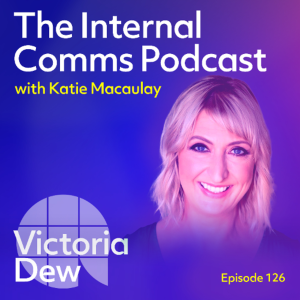
Cracking the frontline code – with Victoria Dew (#126)
November 5, 2025
In this episode, Katie welcomes back the Internal Comms Podcast’s MVP, founder and CEO of Dewpoint Communications Victoria Dew. Back in 2022, Victoria featured on episode 61 of ...
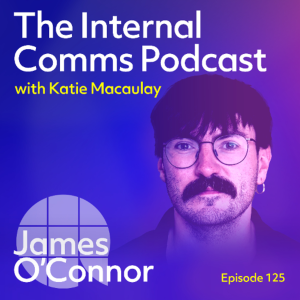
Ryanair’s exercise in efficiency – with James O’Connor (#125)
October 22, 2025
Ryanair flies 200 million passengers to 37 countries in 600 aircraft, a huge operation with a pop-cultural reputation for cheap cheap flights and frank, tongue-in-cheek communicati...

Kicking corporate clichés to the curb with Steve and Cindy Crescenzo (#124)
October 8, 2025
Episode #124 of the Internal Comms Podcast is a joint interview with returning guest Steve Crescenzo and his business partner and wife Cindy. Together, with host Katie Macaulay, th...
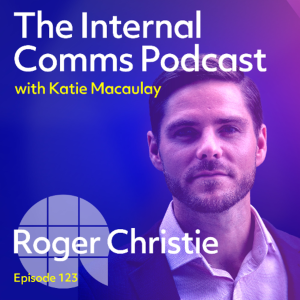
Don’t post, participate – with Roger Christie (#123)
September 24, 2025
In this episode, host Katie Macaulay learns how to get social media right. Tough ask? Not when you’ve got Roger Christie on hand to help. For the past 15 years the founder of ...

The science of happiness (and why we get it wrong) – with Professor Catherine Sanderson (#122)
September 10, 2025
Season 14 of the Internal Comms Podcast kicks off with a conversation about happiness. Host Katie Macaulay welcomes Professor Catherine Sanderson to discuss what really makes us...

Episode 121 – The story behind Bupa's elephant
June 25, 2025
In this episode of The Internal Comms Podcast, Katie Macaulay is joined by Jo Hudson, Group Director of Internal Communication at Bupa. Jo has spent the past 16 years at Bupa, one...
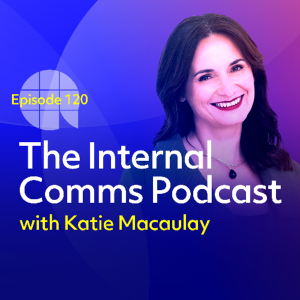
Episode 120 – Walk the line – how to stay in sync
June 11, 2025
In this episode of The Internal Comms Podcast, host Katie Macaulay sits down with alignment strategist and leadership coach Zora Artis to explore a crucial question: how can intern...
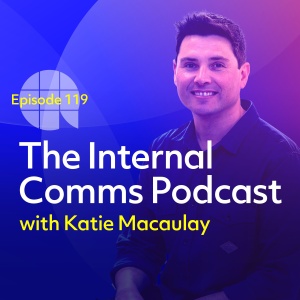
Episode 119 – The suite spot – Microsoft minus the mayhem
May 28, 2025
If the platforms you use at work were built by Microsoft, this episode is essential listening. Katie is joined by Alex Graves, Chief Visionary Officer at Silicon Reef — the peop...

Episode 118 – Satirising the spin – a bullsh*t investigation
May 14, 2025
If you have ever found yourself circling back, touching base, breaking down silos or leveraging strategic synergies — then these guests are speaking your language. Charles Firth...
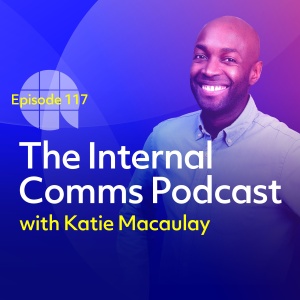
Episode 117 – From humanising a prime minister to empowering the quietest voices
May 12, 2025
What does it take to make one of the most scrutinised leaders in the world feel relatable? And how do we build internal comms that truly include everyone — especially the quieter...

Episode 116 – How to build a remarkable career without a plan
April 7, 2025
Fred Cook’s career proves success doesn’t require a straight line. Now Chairman Emeritus of global PR agency Golin, Fred has spent 35+ years advising world-famous brands – Am...

Episode 115 – Curiosity, creativity & the imposter myth
March 26, 2025
Inspiration is everywhere when you stay curious. That’s the thread running through this episode of The Internal Comms Podcast, where Katie Macaulay welcomes communication, creati...
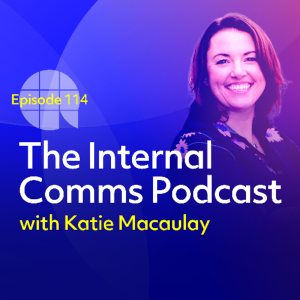
Episode 114 – The credibility code: Become the leader your team deserves
March 12, 2025
What does it mean to be a credible leader? And just how important is that credibility to your team? In this episode of The Internal Comms Podcast, host Katie Macaulay welcomes back...

Episode 113 – Soft skill? Think again: The hard truth about storytelling
February 26, 2025
In this episode of The Internal Comms Podcast, host Katie Macaulay welcomes Jeremy Connell-Waite, Global Communications Designer for IBM, an acclaimed speechwriter and storyteller,...

Episode 112 – From intent to impact: take charge of your career
February 20, 2025
We’re back for season 13 of The Internal Comms Podcast and to kick things off, host Katie Macaulay is joined by Eduvie Martin. Eduvie is Group Communications and Engagement Manag...
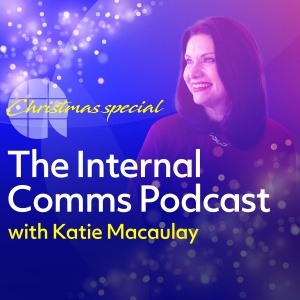
Season 12 – 2024 Christmas Special: nine gifts from the archive
December 18, 2024
In this episode, we mark a big milestone with a gift-wrapped edition of the Internal Comms Podcast. It’s six years since the show launched and, in this Christmas special, host K...
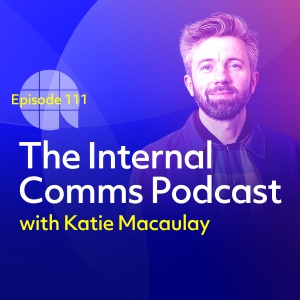
Episode 111 – A creative leader's blueprint for brilliance
December 4, 2024
This week on The Internal Comms Podcast, host Katie Macaulay is joined by a very special guest – AB's creative director, Joel O’Connor. Joel has been with AB for well over a de...
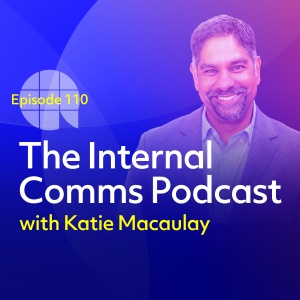
Episode 110 – Navigating the shifting digital landscape
November 20, 2024
This week on The Internal Comms Podcast, host Katie Macaulay is joined by co-founder of Local Wisdom, tech expert and comms leader Pinaki Kathiari. With his rare passion for both t...
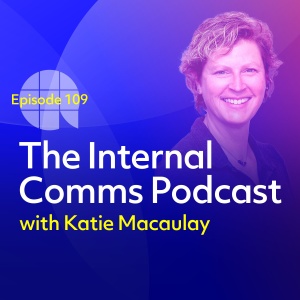
Episode 109 – The business of belonging: A new approach to DEI
November 6, 2024
We all deserve the opportunity to thrive at work. We deserve equal opportunity. We deserve to feel valued and included. That’s what diversity, equity and inclusion (DEI) is all a...
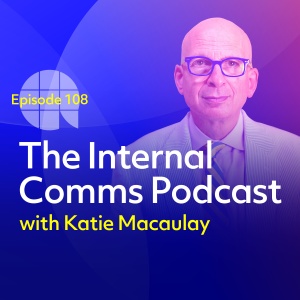
Episode 108 – Seth Godin rewrites the rules of internal communication
October 23, 2024
In this episode, Katie Macaulay is joined by author and influential blogger, Seth Godin. Seth was top of Katie’s guest wish list when The Internal Comms Podcast launched five ye...

Episode 107 – Beyond words: A blueprint for more impactful, immersive IC
October 9, 2024
In this episode of The Internal Comms Podcast, host Katie Macaulay welcomes international internal comms consultant and strategist Monique Zytnik to the hot seat. Monique is the au...

Episode 106 – School of thought: Inside Matt Tidwell’s comms curriculum
September 25, 2024
In this episode of The Internal Comms Podcast, host Katie Macaulay welcomes Matt Tidwell to the hot seat. Matt is a consultant, communicator and educator, and has led comms agencie...
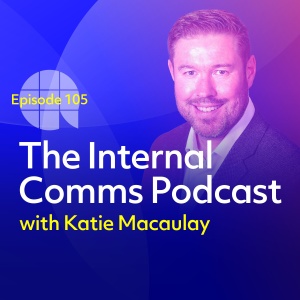
Episode 105 – Reaching the peak of success: IC at Iron Mountain
September 11, 2024
We’re back for Season 12 of The Internal Comms Podcast, and in this first episode, host Katie Macaulay is joined by Senior Director of Corporate Communication at Iron Mountain, N...
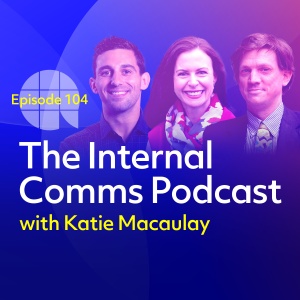
Episode 104 – Communications excellence in times of rapid change
July 31, 2024
McKinsey & Company is one of the world’s most renowned strategic management consultancies. With a mission of striving for “change that changes everything”, its global team of...
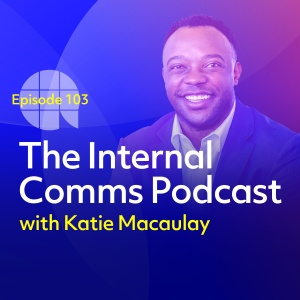
Episode 103 – Say the thing now: Candid conversations at Reddit
July 10, 2024
On a platform where the candid and the curious are king, how do you make sure what’s inside reflects what’s on the outside? Meet Sean Langston, Jr., Head of Internal Communicat...
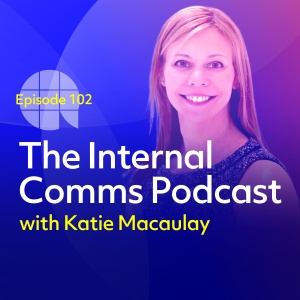
Episode 102 – The sound of success: IC at Spotify, Mastercard and beyond
June 26, 2024
Ever been curious about how some of the biggest brands in the world tackle their internal communication challenges? Well look (or listen) no further. Kerri Warner, this week’s gu...
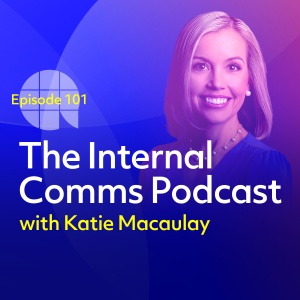
Episode 101 – From complex to clear: Elevate your presentations
June 12, 2024
As internal communicators, empowering leaders to clearly communicate business strategy, important updates and company values is a valued skill. How can we inspire colleagues and le...
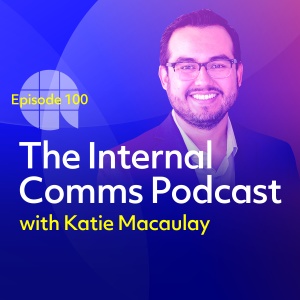
Episode 100 – Meet the super-connector behind #CommsJobs
May 29, 2024
After years running an internal communications team, Daniel Mendez emigrated from Chile to the U.S., where he faced a host of barriers to success. A language barrier. A small or no...

Episode 99 – The communicator’s communicator
May 15, 2024
In this episode of The Internal Comms Podcast, host Katie Macaulay is joined by Linda Zebian. The very first Director of Communications at PR management platform Muck Rack, Linda s...
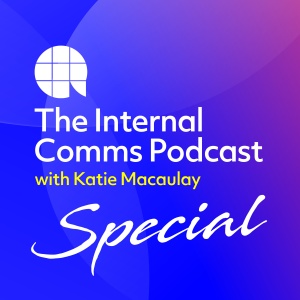
Exclusive reveal: Katie’s IC masterclass
May 1, 2024
Join us for a special episode of The Internal Comms Podcast as host Katie Macaulay announces the imminent launch of her unique on-demand masterclass. With more than three decades ...
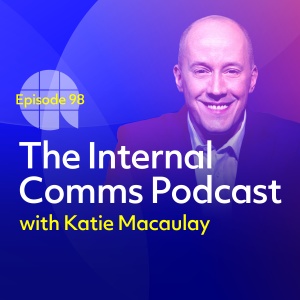
Episode 98 – How to build a powerful personal brand
April 17, 2024
This week on The Internal Comms Podcast, host Katie Macaulay is joined by serial entrepreneur, author, keynote speaker and business mentor Chris Ducker. Chris is a renowned expert ...

Episode 97 – Leaving the ladder down: helping IC pros step up
April 3, 2024
In this episode of The Internal Comms Podcast, host Katie Macaulay welcomes back the show’s first-ever guest, Rachel Miller. Rachel is an internationally recognised internal com...
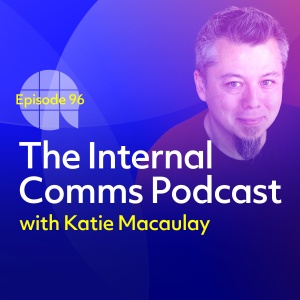
Episode 96 – Inclusion in action: Kindness is the keystone
March 20, 2024
This week on The Internal Comms Podcast, host Katie Macaulay is joined by Global Belonging, Equity and Impact Consultant, and self-styled ‘human-centric technologist’, Bob Wata...
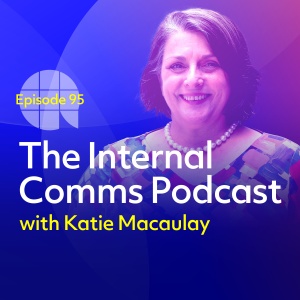
Episode 95 – Mastering your approach to strategic communication
March 6, 2024
This week on The Internal Comms Podcast, host Katie Macaulay is joined by award-winning marketing and communications expert Danielle Bond. Recently retired from corporate life, Da...
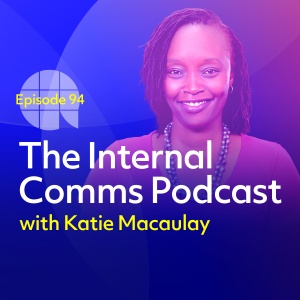
Episode 94 – The stories that shape us
February 21, 2024
In this episode of The Internal Comms Podcast, host Katie Macaulay is joined by leadership communications coach and co-founder of Engage Kenya, Agatha Juma. Agatha credits an emba...
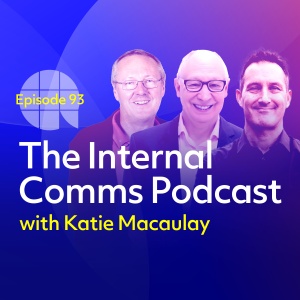
Episode 93 – The sound of success: Why it pays to listen to employees
February 7, 2024
We’re back for Season 11 of The Internal Comms Podcast! And kicking us off with a very special episode, this week host Katie Macaulay is joined by not one, not two, but three gue...
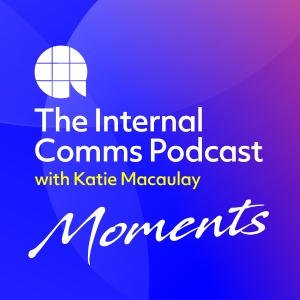
Moment 35 – The four Cs of content: How internal communicators can create comms that land
January 31, 2024
Looking for tips on creating internal communications that land – and stick? In this Moment from The Internal Comms Podcast, Steve Crescenzo shares a few things you absolutely mus...
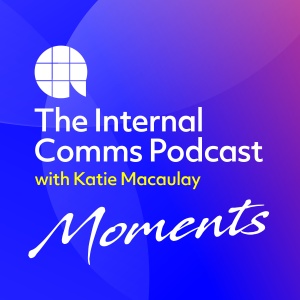
Moment 63 – Are you listening? The power of questions in leadership: Mike Roe
January 24, 2024
“I realised I was probably a pretty crap listener,” Mike Roe tells Katie Macaulay in this Moment from The Internal Comms Podcast. We often go to leaders and start by asking th...
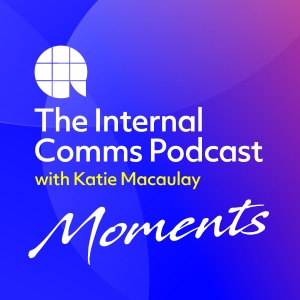
Moment 57 – Language matters: Building two-way engagement at IKEA
January 17, 2024
At IKEA, choosing the right words when communicating with the workforce is everything. Guy Britt, IKEA’s Global Head of Co-worker Comms, tells Katie Macaulay the use of ‘co-wo...

Episode 92 – Revolution coming: How AI is transforming internal comms
December 20, 2023
If you have ever attended one of Shel Holtz’s presentations, you will know that, more often than not, it’s standing room only. Shel has a remarkable ability to anticipate what'...
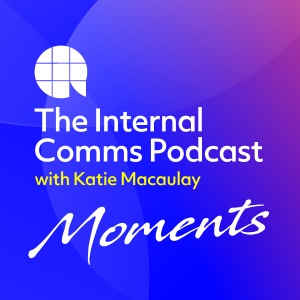
Moment 61 – Human-centric businesses do better: Victoria Dew
December 6, 2023
Does your approach to internal communication have the human touch? It’s essential to the humans you employ, says Victoria Dew, CEO of Dewpoint Communications and an internal com...
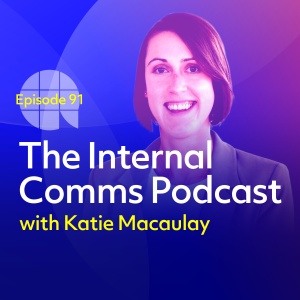
Episode 91 – How to build a one-person IC powerhouse
November 22, 2023
Ever feel like, as an internal communicator, you’re fighting an uphill battle all by yourself? This week’s guest on The Internal Comms Podcast has exactly what you need. Host ...
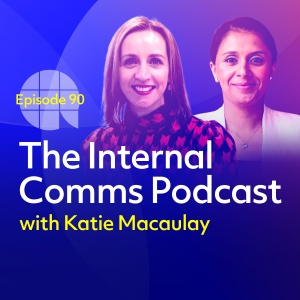
Episode 90 – A shared vision: ED&I and IC in action
November 8, 2023
This week on The Internal Comms Podcast, host Katie Macaulay is joined by Sim Sian, Head of Equality, Diversity and Inclusion at Mitie, and Yvonne O’Hara, formerly Mitie’s Grou...

Episode 89 – Netflix-style IC: Snackable, on-demand and authentic
October 25, 2023
In this episode of the Internal Comms Podcast, host Katie Macaulay is joined by Access Group’s Global Head of Communications and Engagement, Paul Downey. Paul caught Katie’s ...

Episode 88 – It’s fixable: How to tackle hard problems
October 11, 2023
In this episode of the Internal Comms Podcast, host Katie Macaulay is joined by Anne Morriss. Anne is an entrepreneur, author, public speaker, and the Executive Founder of the Lea...
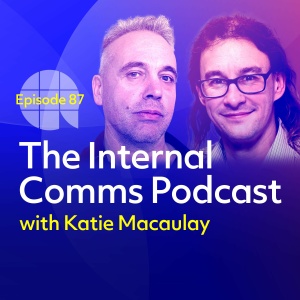
Episode 87 – Tracing the legacy of internal comms
September 27, 2023
It’s often said we must understand the past to build the future, and that sentiment sits at the very heart of this episode. This week on The Internal Comms Podcast we welcome pr...
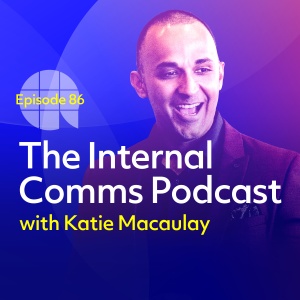
Episode 86 – How to crush your next public speaking gig
September 13, 2023
Season 10 of the Internal Comms Podcast kicks off with one of Katie’s most compelling conversations yet. Shil Shanghavi is a public speaking specialist, storyteller and head of...

Coming soon: Season 10 of The Internal Comms Podcast
September 6, 2023
Our summer break is drawing to a close, Katie has dusted off her mic and we’re ready to launch Season 10 of The Internal Comms Podcast! This season, we’ll be welcoming more o...

Moment 18 – 3% of employees are driving 90% of conversations: Mike Klein
August 30, 2023
In this moment, we catch up with Mike Klein, former political consultant, modern-day communications stalwart, and two-time guest on the Internal Comms Podcast. Mike breaks down h...
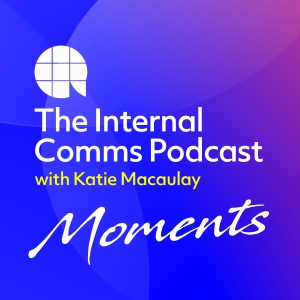
Moment 17 – How we create meaning: Sue Dewhurst & Liam FitzPatrick
August 23, 2023
What’s our one true purpose as internal communicators? It’s the question we’re all seeking the answer to. This moment takes us back to when Katie first welcomed Sue Dewhurs...

Moment 13 – The message must change at each leadership level: Dr Kevin Ruck
August 16, 2023
If there’s one thing we’re clear about at AB, it’s that communication should not be a one-way street. And that’s what this moment is about. We head back to Episode 13, w...

Moment 06 – On tolerance, kindness and being enough: Henry Normal
August 9, 2023
As communicators, we could often do with slowing things down a little. In this moment, Henry Normal – author and co-founder of production company Baby Cow, which he founded with ...
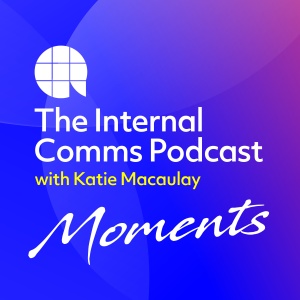
Moment 01 – What happens inside is reflected outside: Rachel Miller
August 2, 2023
Have you heard of an inside-out approach to communication? It’s no secret that today’s internal comms messages seep into the world outside the office walls. After all, anythi...
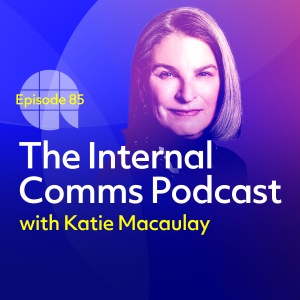
Episode 85 – Lessons from a trailblazer
July 26, 2023
We’re ending Season 9 of the Internal Comms Podcast with a bang this week, as Sally Susman takes to the hot seat for her second appearance. Sally is Executive Vice President an...
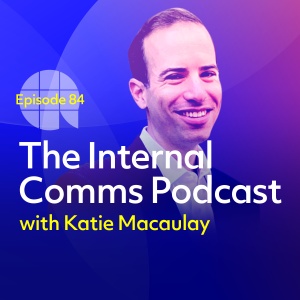
Episode 84 – Ethics in action: Insights from a global compliance leader
July 12, 2023
In modern business, integrity is non-negotiable. As legislation ramps up in lockstep with colleague and customer demands, operating an ethical business in line with global regula...

Episode 83 – ESG: How IC can drive the agenda
June 28, 2023
Define ESG… Well, it stands for environment, social and governance. But can you really define what ESG actually is? Put very simply, ESG is a set of criteria used to evaluate a ...
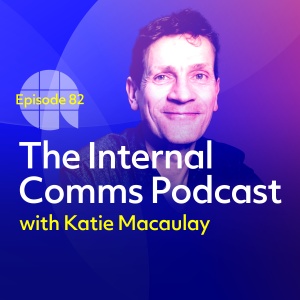
Episode 82 – The truth about resilience
May 31, 2023
It seems everyone’s talking about resilience, the ability to bounce back from misfortune or adversity. But as Bruce Daisley explains to host Katie Macaulay, there’s something w...
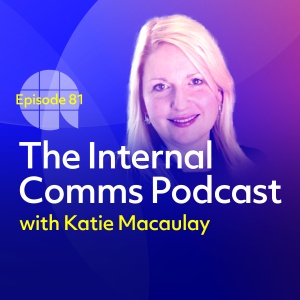
Episode 81 – Unilever: Inside a global success story
May 17, 2023
With over 130,000 colleagues, and a 100-year history, Unilever is one of the world’s largest consumer goods companies. And this week on the Internal Comms Podcast, we get a peek ...
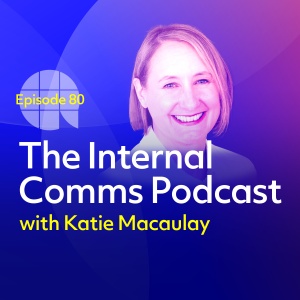
Episode 80 – The inside track on comms at Mercedes F1
May 3, 2023
“The days we fail are the days our competitors live to regret,” said the late, great Niki Lauda. And that’s what this episode of the Internal Comms Podcast is all about. Thi...

Episode 79 – Lifting the lid on comms consultancy
April 19, 2023
Ever considered what it takes to become an effective communications consultant? Then this week’s episode of The Internal Comms Podcast is for you. Host Katie Macaulay welcomes Si...

Episode 78 – Comms with courage
April 5, 2023
This week on The Internal Comms Podcast, host Katie Macaulay welcomes Audacity’s Jason Anthoine. Jason has spent three decades working in internal communication, employee experie...
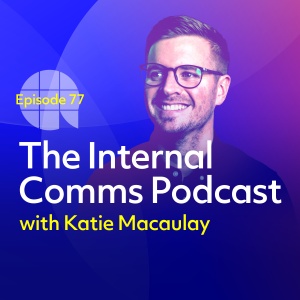
Episode 77 – Here for the culture
March 22, 2023
This week on The Internal Comms Podcast, host Katie Macaulay welcomes culture-chameleon Shane Hatton. Shane is many things – author, international speaker, trainer, leadership co...

Episode 76 – Employee experience: For the people by the people
March 8, 2023
This week on The Internal Comms Podcast, host Katie Macaulay welcomes Nicholas Wardle. Nicholas is Head of Employee Experience at Brand Experiences, and co-author of ‘Monetising ...

Episode 75 – Inside the world’s most famous corner shop
February 22, 2023
This week on The Internal Comms Podcast, host Katie Macaulay welcomes Sam Bleazard. Sam’s role as Employer Brand Content Producer takes him behind the scenes of ‘the world’s ...

Episode 74 – Culture with sticking power
February 8, 2023
The Internal Comms Podcast is back for Season 9! To kick off this season, we welcomed BizJuicer’s Andy Goram to the hot seat. Andy’s passion for building businesses ‘from t...

Season 8: In the rear view mirror
February 1, 2023
With Season 9 of The Internal Comms Podcast right around the corner, host Katie Macaulay has taken the opportunity to reflect on the wisdom and insight shared over our latest seaso...
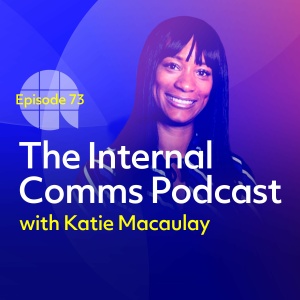
Episode 73 – Forging your own path
December 21, 2022
The season 8 finale features Jennifer Thomas, Head of Communications for the Data & Analytics branch of the London Stock Exchange Group. Born in London to Guyanese parents, Jennif...
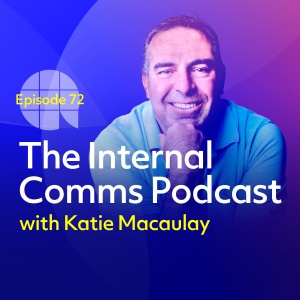
Episode 72 – Making your way to the top
December 7, 2022
Episode 72 of The Internal Comms Podcast sees host Katie Macaulay joined by Adrian Cropley, CEO and founder of Cropley Communication and the Centre for Strategic Communication Exce...

Episode 71 – Effective comms starts with knowing yourself
November 23, 2022
This week’s guest on The Internal Comms Podcast is Joanna Parsons, Head of Internal Communications & Culture at Teamwork. Joanna made Irish history as the first ever Head of Inte...
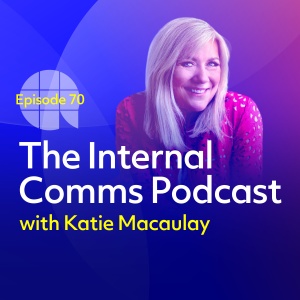
Episode 70 – Reaching across the aisle
November 9, 2022
Shelby Scarbrough, author of 'Civility Rules! Creating a Purposeful Practice of Civility', shares her deep insight and experience ‘reaching across the aisle’ on episode 70 of T...

Episode 69 – Measuring what matters – actions not feelings
October 26, 2022
Episode 69 of The Internal Comms Podcast sees IC heavyweight Mike Klein return to the hot seat. An internal and social communication consultant based out of Reykjavik, Mike is help...

Episode 68 – Host in the hot seat: Reflections on 250,000 plays
October 12, 2022
In this very special episode of The Internal Comms Podcast, the tables have turned. Katie Macaulay is in the hot seat, and AB’s Senior Content Editor Freddie Reynolds takes over ...
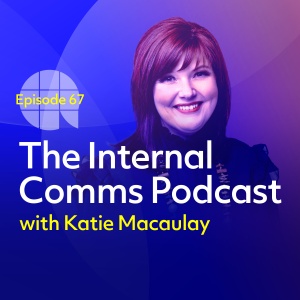
Episode 67 – The ABC of research: Ask, believe, change
September 28, 2022
In this episode of The Internal Comms Podcast, host Katie Macaulay invites qualitative research expert Mari Lee to sit in the hot seat. Mari’s specialism is in ‘development com...
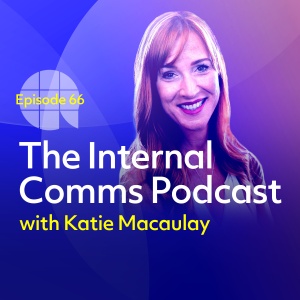
Episode 66 – Combatting IC isolation
September 14, 2022
The Internal Comms Podcast is back for what promises to be an incredible Season 8! In this kick-off episode, host Katie Macaulay welcomes ICology’s Vice President of Community an...

Season 7: The rewind episode
September 7, 2022
The countdown is on, and The Internal Comms Podcast will be returning from its summer break with Season 8 imminently. And while its eighth instalment promises wisdom unbound from a...

Episode 65 – Remote but not unreachable
June 22, 2022
In the final episode of season 7 of The Internal Comms Podcast, host Katie Macaulay speaks with Lily Goodman D’Amato, Delivery Trainer at US-based digital pharmacy Medly. Lily b...

Episode 64 – Releasing your inner sceptic
June 8, 2022
In the latest episode of The Internal Comms Podcast, host Katie Macaulay speaks with Martin Flegg, founder and co-owner of The IC Citizen internal communications consultancy. With...
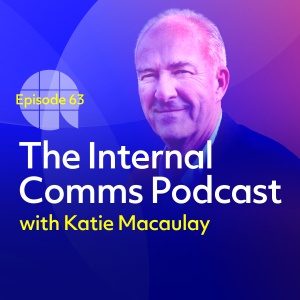
Episode 63 – Lessons in leadership
May 25, 2022
In episode 63 of The Internal Comms Podcast, host Katie Macaulay meets Mike Roe, who had a 28-year career in the police force and is now CEO of Tensense, a data insights company. ...
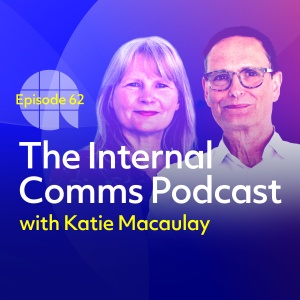
Episode 62 – Textbook IC: rewriting comms for a new era
May 11, 2022
In the latest episode of The Internal Comms Podcast, host Katie Macaulay speaks with the duo who wrote the book on internal communications – literally. Sue Dewhurst has worked i...

Episode 61 – Embracing the messiness of being human
April 27, 2022
In this week’s episode of The Internal Comms Podcast, host Katie Macaulay sits down with Victoria Dew, founder and CEO of Dewpoint Communications. Her firm is focused on helping ...
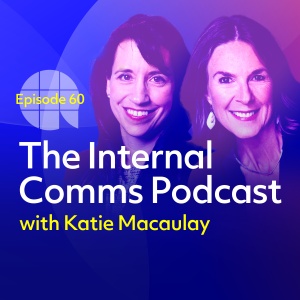
Episode 60 – How to have better conversations
April 13, 2022
In this week’s episode of The Internal Comms Podcast, host Katie Macaulay sits down with Jackie Stavros and Cheri Torres, co-authors of Conversations Worth Having, Using Apprecia...

Episode 59 – Strategy & IC: A masterclass in collaboration
March 30, 2022
In this episode of The Internal Comms Podcast, host Katie Macaluay looks into the dynamic between internal comms and strategy – at its best a symbiotic relationship that drives t...
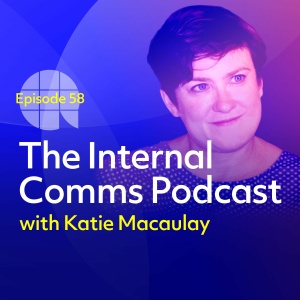
Episode 58 – The state of IC: what’s behind the numbers?
March 16, 2022
In episode 58 of The Internal Comms Podcast, we dissect the results of the latest State of the Sector report, the definitive global survey of the internal communication landscape, ...
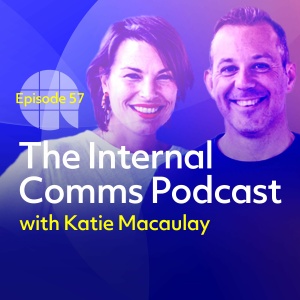
Episode 57 – Unboxing internal comms at IKEA
March 2, 2022
In episode 57 of The Internal Comms Podcast, listeners can take a peek inside the world of IC at IKEA, as host Katie Macaulay chats with a dynamic duo from the multinational furnit...
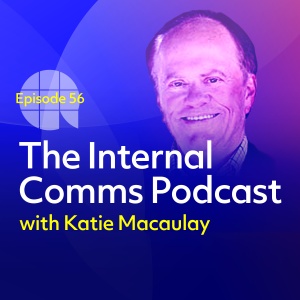
Episode 56 – IC at the sharp end
February 16, 2022
In this first episode of season 7 of The Internal Comms Podcast, host Katie Macaulay talks to Jim Shaffer, an internationally recognised business adviser, leadership coach, author ...
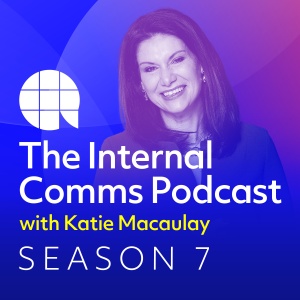
Leading Lights – Highlights From Season 6
February 9, 2022
Get ready to tune in to our next season of The Internal Comms Podcast. While Season 7 promises an amazing array of guests, this special episode highlights some of the best moments ...
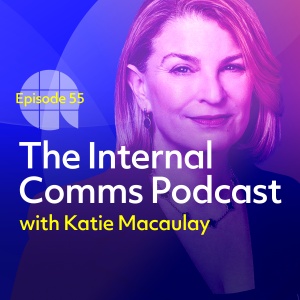
Episode 55 – Mission Possible
December 1, 2021
In the final episode of season 6 of The Internal Comms Podcast, host Katie Macaulay speaks to Sally Susman, Executive Vice President and Chief Corporate Affairs Officer at Pfizer. ...
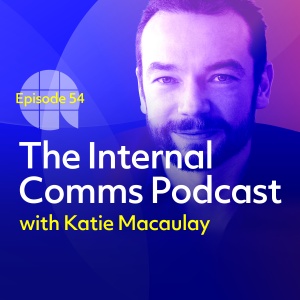
Episode 54 – Brain care: Mastering your mind
November 17, 2021
In the sixth episode of season 6 of The Internal Comms Podcast, host Katie Macaulay talks to Phil Dobson, founder of BrainWorkshops and author of The Brain Book: How to Think and W...

Episode 53 – Suicide Prevention: Reflecting on an award-winning campaign
November 3, 2021
***The content in this episode of The Internal Comms Podcast may be triggering for those who have experience of suicide.*** In the fourth episode of season 6 of The Internal Comms...

Episode 52 – How do you create comms with purpose?
October 20, 2021
In the fourth episode of season 6 of The Internal Comms Podcast, host Katie Macaulay catches up with Maliha Aqeel, Director of Global Communications and Digital Channels at Fix Net...
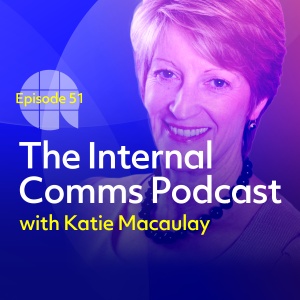
Episode 51 – Why are we here? How purpose and values drive healthy cultures
October 6, 2021
In the third episode of season 6 of The Internal Comms Podcast, host Katie Macaulay catches up with communications expert and IABC Fellow Jane Mitchell. Jane began her career with...

Episode 50 – A guru’s guide to internal podcasts
September 22, 2021
In the second episode of season 6 of The Internal Comms Podcast, host Katie Macaulay talks to Brian Landau, an authority in podcasting and expert on all things audio content creati...
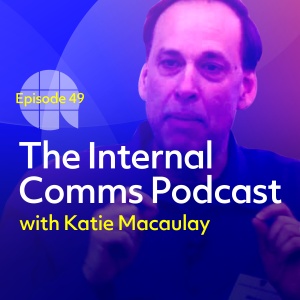
Episode 49 – Engagement: how it started, how it's going
September 8, 2021
In this first episode of season 6 of The Internal Comms Podcast, host Katie Macaulay talks to the father of employee engagement, organisational psychologist Professor William Kahn....
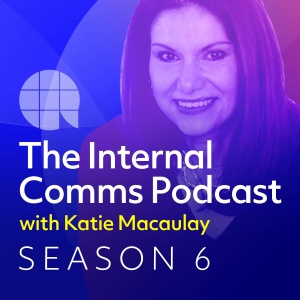
Industry experts – highlights from Season 5
September 1, 2021
The curtain is about to go up on the new season of The Internal Comms Podcast, with some fantastic guests joining host Katie Macaulay to talk about all things communication. For t...
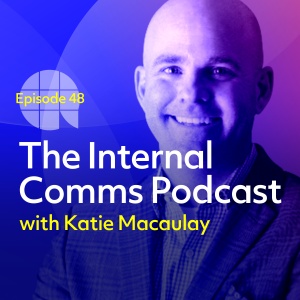
Episode 48 – Changing minds: using behavioural science in IC
May 12, 2021
It has always been Katie Macaulay’s goal for The Internal Comms Podcast to help improve the way organisations communicate with their people, and this week she does so by explorin...
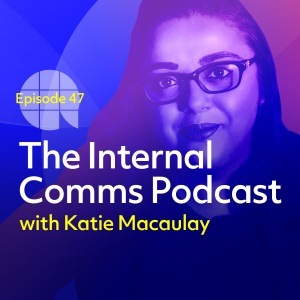
Episode 47 – Conversation with a comms rebel
April 28, 2021
Katie Macaulay’s guest this week is a leading light in efforts to advance the careers of under-represented groups in IC. Advita Patel is a qualified coach, mentor, public speake...
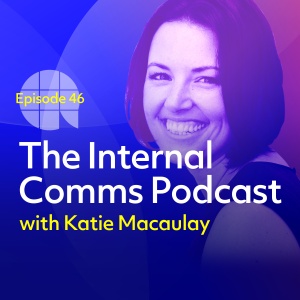
Episode 46 – Influential Internal Communication
April 14, 2021
This episode sees the return of the brilliant business communications strategist, international public speaker and podcast host Jenni Field. The immediate past chair of the Charte...
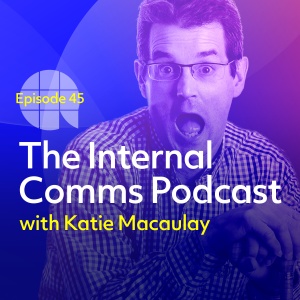
Episode 45 – Sharing the magic
March 31, 2021
The life and career of this week’s guest has been a literal roller coaster. Mark Webb fell into PR and media relations by chance, after spotting a job ad for the new Eurodisney ...

Episode 44 – How to prove your presence
March 17, 2021
Katie Macaulay’s guest for episode 44 of The IC Podcast is Canadian comms expert Prarthna Thakore. After beginning her career in Calgary and then moving to London, Prarthna has ...
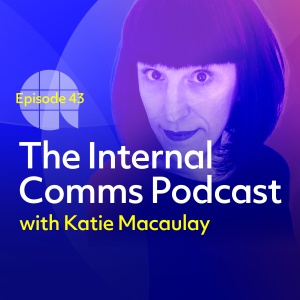
Episode 43 – Kate Jones on the state of our sector
March 3, 2021
Every year since 2008, internal comms pros have responded to the Gallagher State of the Sector report. Because it’s been running for 13 years, and because similar questions are a...

Episode 42 – Once Upon A Time In IC
February 17, 2021
Katie Macaulay kicks off Season 5 of The IC Podcast with a riveting conversation with business storytelling specialist Gabrielle Dolan. Gabrielle is a highly sought-after internat...

Looking back, looking forward: highlights from Season 4
February 10, 2021
With the new season of The Internal Comms Podcast just around the corner, we wanted to whet your appetite with a selection of the best bits from Season 4. For this special best-of...
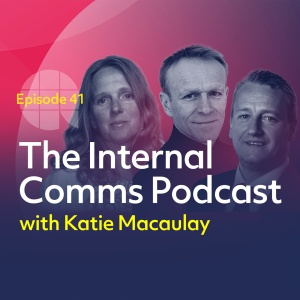
Episode 41 – At the heart of the crisis: NHS comms during Covid-19
December 23, 2020
The NHS has never been far from our hearts and minds over the last few months. As the national jewel in the UK’s crown, the National Health Service has battled many difficulties ...

Episode 40 – Founding fathers – building the first IC agency
December 17, 2020
What prompted the creation of the first IC agency back in 1964 and what convinced those first chief executives that they needed external help communicating with their employees? W...
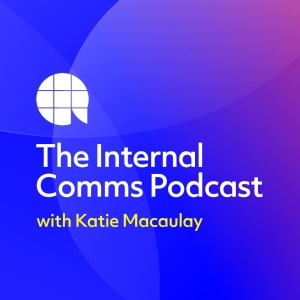
Coming soon in season 4
December 9, 2020
Coming soon in season 4 of The Internal Comms Podcast
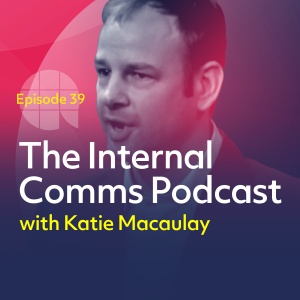
Episode 39 – Evidence-based IC
November 25, 2020
Recent research shows measurement is particularly challenging for many internal comms professionals. Katie’s guest on this episode of The Internal Comms Podcast is Benjamin Ellis...

Episode 38 – The secret thoughts of successful people
November 11, 2020
Amid the turmoil of 2020, with IC pros thrown into the spotlight as we strive to keep colleagues informed and connected, it’s not surprising that many of us are feeling a degree ...
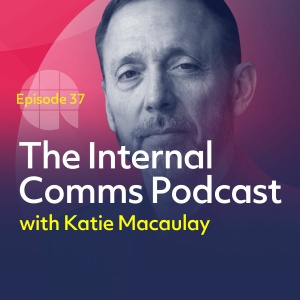
Episode 37 – The art of negotiation
October 28, 2020
If you want to take your communication skills to the next level, then this episode of The Internal Comms Podcast is for you. Katie’s guest is a formidable negotiator and expert ...

Episode 36 – Navigating the digital landscape
October 14, 2020
In this episode of The Internal Comms Podcast we meet digital expert Frank Wolf. Frank spent seven years as a business consultant at Accenture. Then at T Mobile, he was responsible...

Episode 35 – How to do less, but do it better
September 30, 2020
In this episode of The Internal Comms Podcast we meet Steve Crescenzo, a witty, straight-talking and charismatic speaker, workshop leader and coach from Chicago, USA, who has spent...

Episode 34 – Cross-cultural comms
September 16, 2020
The Internal Comms Podcast is now in its fourth season – and to kick it off Katie sat down with Tasneem Chopra for some honest and open conversation. The self-styled “professi...
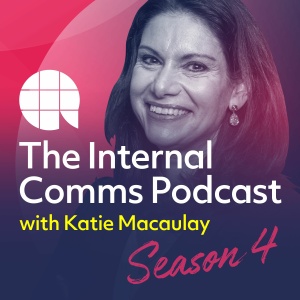
Choice cuts: highlights from Season 3 of The IC Podcast
September 2, 2020
Before the curtain lifts on Season 4 of The IC Podcast, we wanted to leave you with some food for thought from Season 3. And what a season it was; we had a whole host of remarkabl...
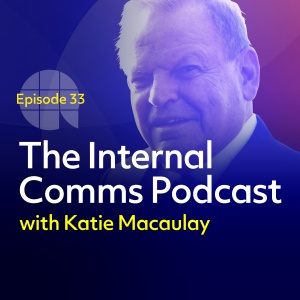
Episode 33 – IC’s founding father
July 8, 2020
The goal of this podcast is to bring you meaningful, in-depth conversations with people who are helping to shape the world of internal communication: practitioners, leaders, author...
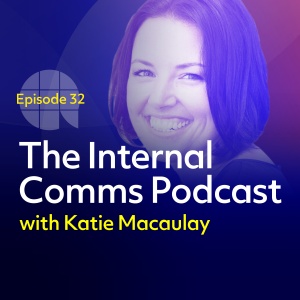
Episode 32 – Leadership in unprecedented times
June 24, 2020
President of the Chartered Institute of Public Relations (CIPR), Jenni Field has more than 16 years’ experience in communications. She is the founder and director of Redefining C...
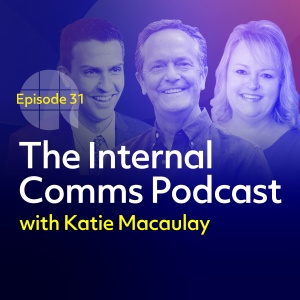
Episode 31 – What's next? IABC roundtable on the impact of Coronavirus
June 10, 2020
The Internal Comms Podcast has gone truly global with our latest episode featuring three speakers from three countries. In episode 31 Katie tables a roundtable discussion with Jen...

Episode 30 – Your biggest, best, boldest self
May 27, 2020
Chief Executive of the Office for Nuclear Regulation (ONR), Adriènne Kelbie has an exceptional understanding of the true power of communication and engagement. The first woman to ...

Episode 29 – Crisis communication at the coalface
May 13, 2020
Katie’s guest this week is someone who is no stranger to crisis communication. Amanda Coleman was the Director of Corporate Communication at Greater Manchester Police when, on M...
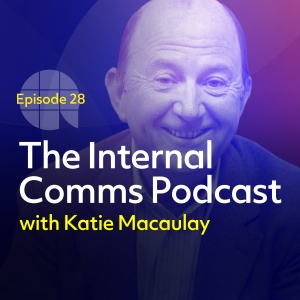
Episode 28 – The Godfather of IC
April 29, 2020
Katie’s guest this week is one of the world’s leading authorities on internal comms and the management of change: Bill Quirke. As managing director of IC consultancy Synopsis,...
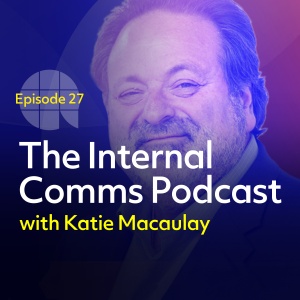
Episode 27 – Stepping up in a Crisis
April 14, 2020
This week Katie speaks to renowned communicator Shel Holtz. As listeners continue to grapple with keeping workforces informed, galvanised and feeling connected during the corona cr...
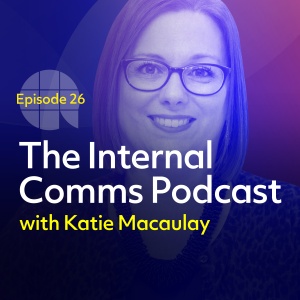
Episode 26 – How to thrive in IC (Part II)
April 1, 2020
This episode is recorded as the majority of the UK is in lockdown while the country attempts to flatten the curve of the COVID-19 pandemic. Katie Macaulay’s guest, Rachel Miller...
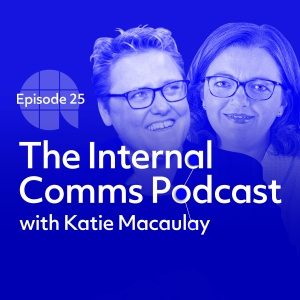
Episode 25 – Crisis Communications: Covid-19 Special
March 25, 2020
Katie Macaulay recorded this special episode on Friday 20 March 2020 in response to the rapidly developing situation surrounding the Covid-19 pandemic. Her guests to talk all thin...
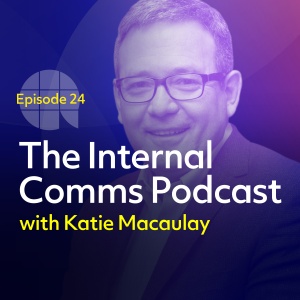
Episode 24 – A view from the top
March 18, 2020
In this episode of The Internal Comms Podcast, Katie puts her first CEO in the hotseat: Marc Barone. Marc is chief executive for continental Europe at AECOM. This Fortune 500 comp...

Episode 23 – Courage, confidence and communication
March 4, 2020
In this episode of The Internal Comms Podcast Katie talks to one of world’s most qualified communicators, Priya Bates, from Canada. Priya has an Accredited Business Communicator...
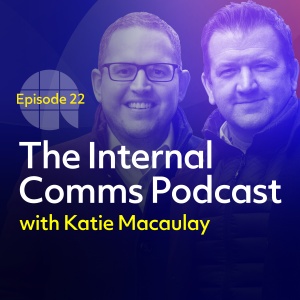
Episode 22 – State of the Sector
February 19, 2020
State of the Sector is the longest-established and most in-depth survey of the internal communication profession, based on responses from more than 1,000 professionals around the w...
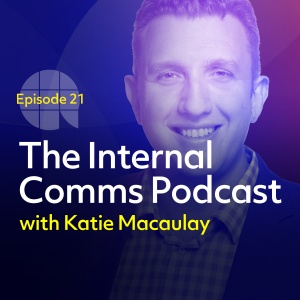
Episode 21 – The cheerleader for IC
February 5, 2020
During Seasons One and Two we covered a lot of ground in IC and beyond. As we begin Season Three, brace yourself for more fascinating insights as we delve into the very heart of co...
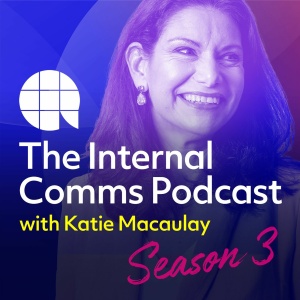
The highlight reel – nuggets of wisdom from Season 1 and 2 of The IC Podcast
January 29, 2020
Since the launch of The Internal Comms Podcast, host Katie Macaulay has interviewed more than 20 fascinating guests from the world of IC and beyond. Now, as we gear up for Season ...
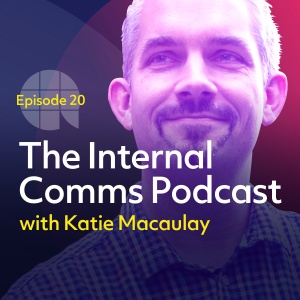
Episode 20 – Advocacy in action
December 18, 2019
Katie’s guest this week is Keith Lewis, UK Social Media and Social Business Manager for Zurich Insurance – one of the world’s largest insurance groups with 55,000 employees i...

Episode 19 – The appliance of neuroscience
December 4, 2019
Katie Macaulay’s guest this week is a neuroscientist with extensive experience in the field of organisational change. Hilary Scarlett began studying the brain in 2009 after read...
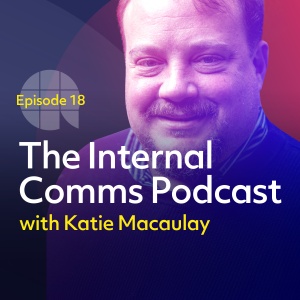
Episode 18 – Editing organisations
November 20, 2019
In this episode we get up close and personal with someone who helps improve the way we communicate at work. Mike Klein worked as a political consultant in the US, but for the past...

Episode 17 – Black Belt Thinking
November 6, 2019
As individuals, this week’s guests have impressive CVs. Sue Dewhurst is an experienced internal communicator who, for many years, has been training and coaching thousands of lea...
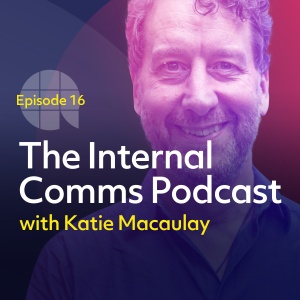
Episode 16 – A Passage to India
October 23, 2019
With this podcast now reaching listeners in 50 countries worldwide, host Katie Macaulay has chosen to go international for this episode. Her guest is creative services entrepreneu...
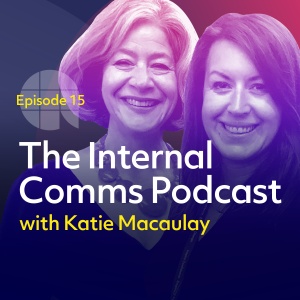
Episode 15 – The Power of Two
October 8, 2019
This week, Katie meets Claire Hyde and Louise Wadman, joint heads of IC at KPMG UK. Possibly the most senior IC job share in the country, Claire and Louise have more than 45 years...

Episode 14 – How to start a movement
September 24, 2019
Katie’s guest this episode is Nita Clarke – whose services to employee engagement have earned her an OBE from the Queen. Nita has a long and fascinating career. She co-authore...

Episode 13 – A check-up with the IC doctor
September 11, 2019
The Internal Comms Podcast is back with a new series of fortnightly conversations with leading lights from the world of internal communications, engagement and leadership. AB Mana...
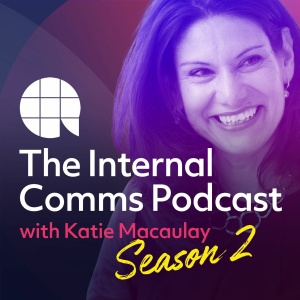
Season 02 Trailer
September 6, 2019
Season two of The Internal Comms Podcast is almost here!
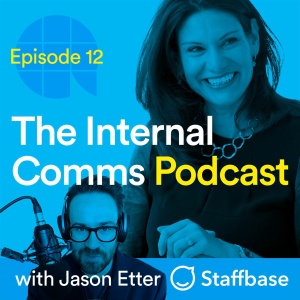
Episode 12 – Listen and learn: insights from 30 years in IC
July 24, 2019
In this extra special bonus episode of The Internal Comms Podcast, the tables are turned on Katie as she takes the spotlight as an interviewee. Posing the searching questions is J...

Episode 11 – Putting the soul back into Patisserie Valerie
June 25, 2019
For this special bonus episode of The IC Podcast, Katie interviewed Paolo Peretti, Managing Retail Director of Patisserie Valerie, in front of a live audience at AB Thinks Live, ou...
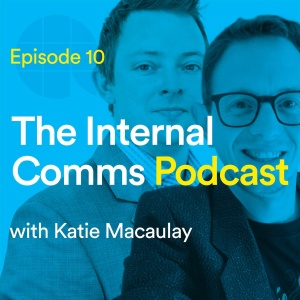
Episode 10 – Internal comms at the sharp end - recorded at IoIC live
May 21, 2019
For the final episode of season one, Katie Macaulay travels to Bath for IoIC Live and interviews two of the conference’s speakers, Martin Fitzpatrick and Matt Batten. Both Marti...

Episode 09 – How to win colleagues and influence people
May 7, 2019
Social influencer marketing is a new and rapidly growing means of getting your message out to your audience. It’s changed the face of advertising and has everyone from up-to-the-...

Episode 08 – The Joy of Work
April 23, 2019
Katie’s guest this week is an extremely versatile communicator. In his day job as European Vice President of Twitter, Bruce Daisley has overseen the development of one of the wor...
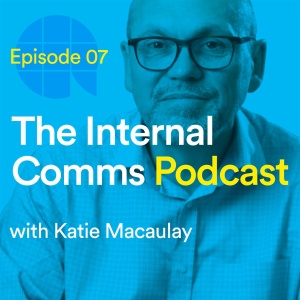
Episode 07 – What social purpose (really) means
April 9, 2019
Running the UK’s largest retail and financial services network with more branches than all of the UK’s banks and building societies put together, the Post Office is at the hear...

Episode 06 – The craft of communication
March 27, 2019
In episode six, Katie travels beyond the boundaries of internal comms to find out how to write more engagingly, tell better stories and use humour to deliver your message. And who ...
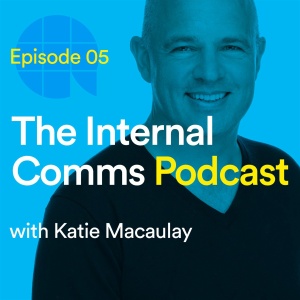
Episode 05 – Learning comms lessons from PR
March 13, 2019
In episode five, Katie aims to find out what internal communications can learn from external communications. So she sits down with ‘mister public relations’, Stephen Waddington...
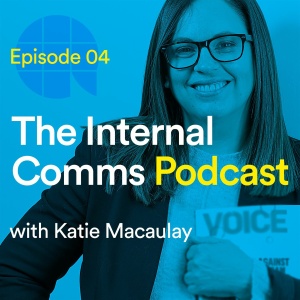
Episode 04 – What it means to be the voice of IC
February 27, 2019
The Institute of Internal Communication (IoIC) is the voice of the IC profession – dedicated to strengthening confidence, credibility and community. And on 12 March, the IoIC cel...
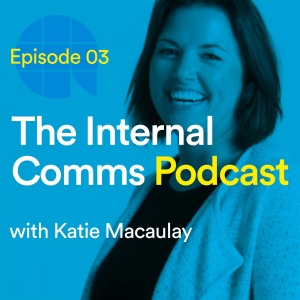
Episode 03 – What the State of the Sector report means for IC
February 13, 2019
Episode three lands as Gatehouse’s latest State of the Sector report is published. Katie invites Jenni Field, a tireless, high-profile personality of the IC landscape, to discus...
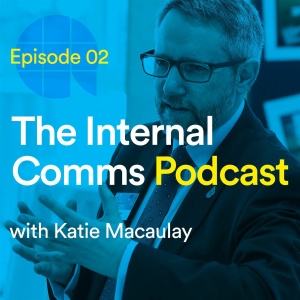
Episode 02 – What it takes to be an IC leader
January 30, 2019
Even if you’re only vaguely familiar with internal communications, Katie’s guest in episode two will no doubt be a name you recognise. In a career spanning 30 years, Russell G...

Episode 01 – How to thrive in IC
January 16, 2019
In the first episode of The Internal Comms Podcast, Katie meets Rachel Miller – a prolific blogger, educator, keynote speaker and one of the most respected voices in internal com...
